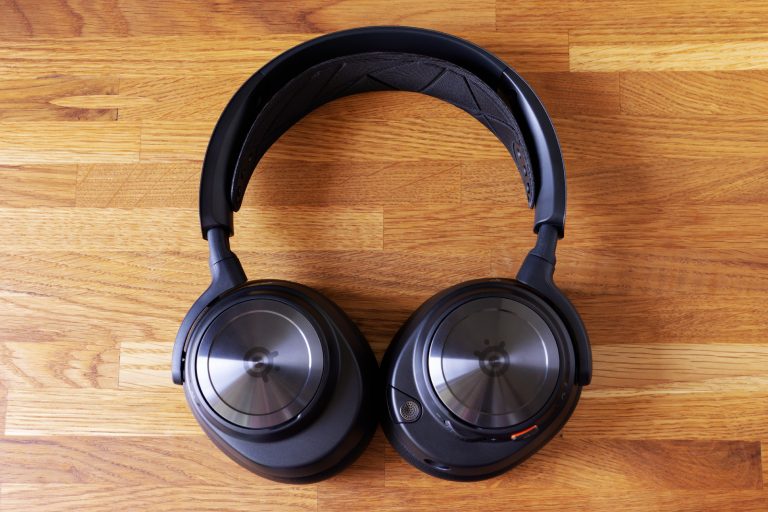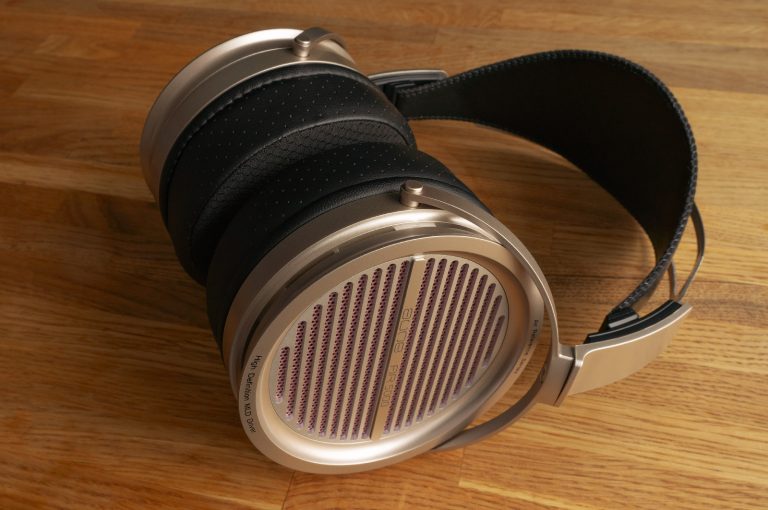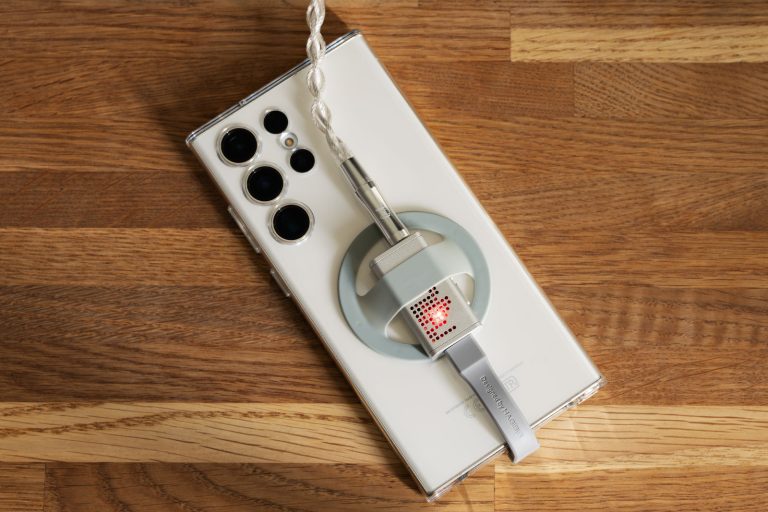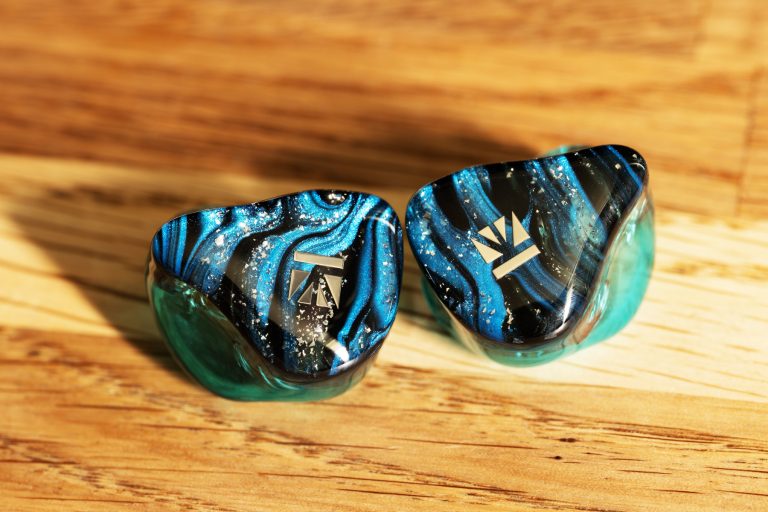Moondrop PARA Headphones Review
‘Astrologers procalimed the week of Moondrop. The decibel count increases at an 8 kHz frequency.’
All because the manufacturer’s just released a couple of devices that interested me (not just headphones), so yes, Moondrop again. And today we’re taking a look at the planar Moondrop PARA headphones (the initial model name was Paradise). This is not the first attempt of the Chinese manufacturer to go big: their line of circumaural headphones already includes the JOKER, VOID and VENUS models. The first two are dynamic, and the third one is planar. As for their price tags, the PARA cost $300, while the VOID and the VENUS are available for $200 and $600, respectively.
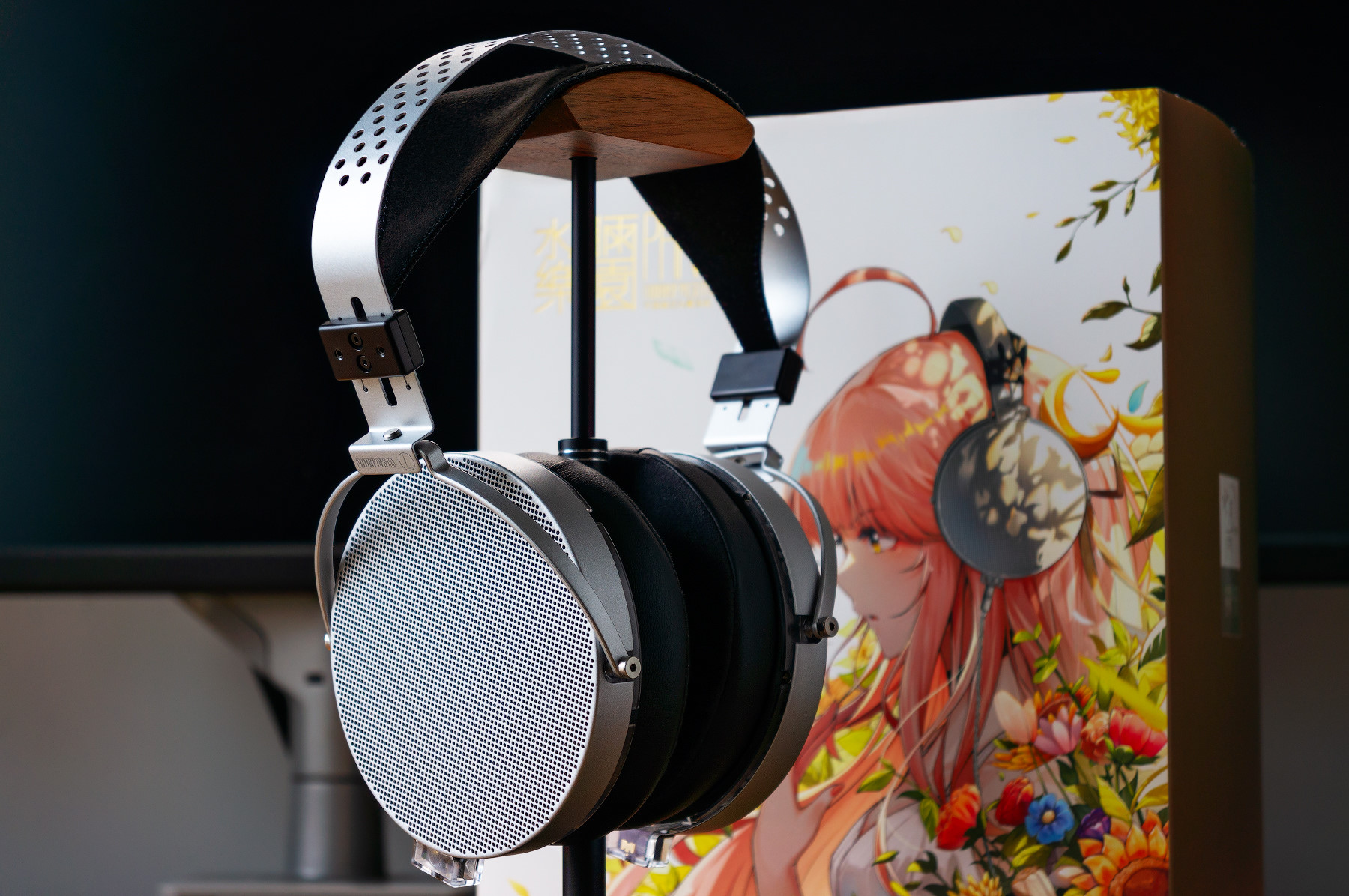
So, how much ‘Paradise’ is in those Moondrop PARA? Let’s see. Disclaimer: this review is probably the best review in the whole Internet. We don’t do worst, you know that.
1. What’s included
The headphones come in a stark black box with an anime gurl on the wrapper. No surprises here, Moondrop is true to tradition.
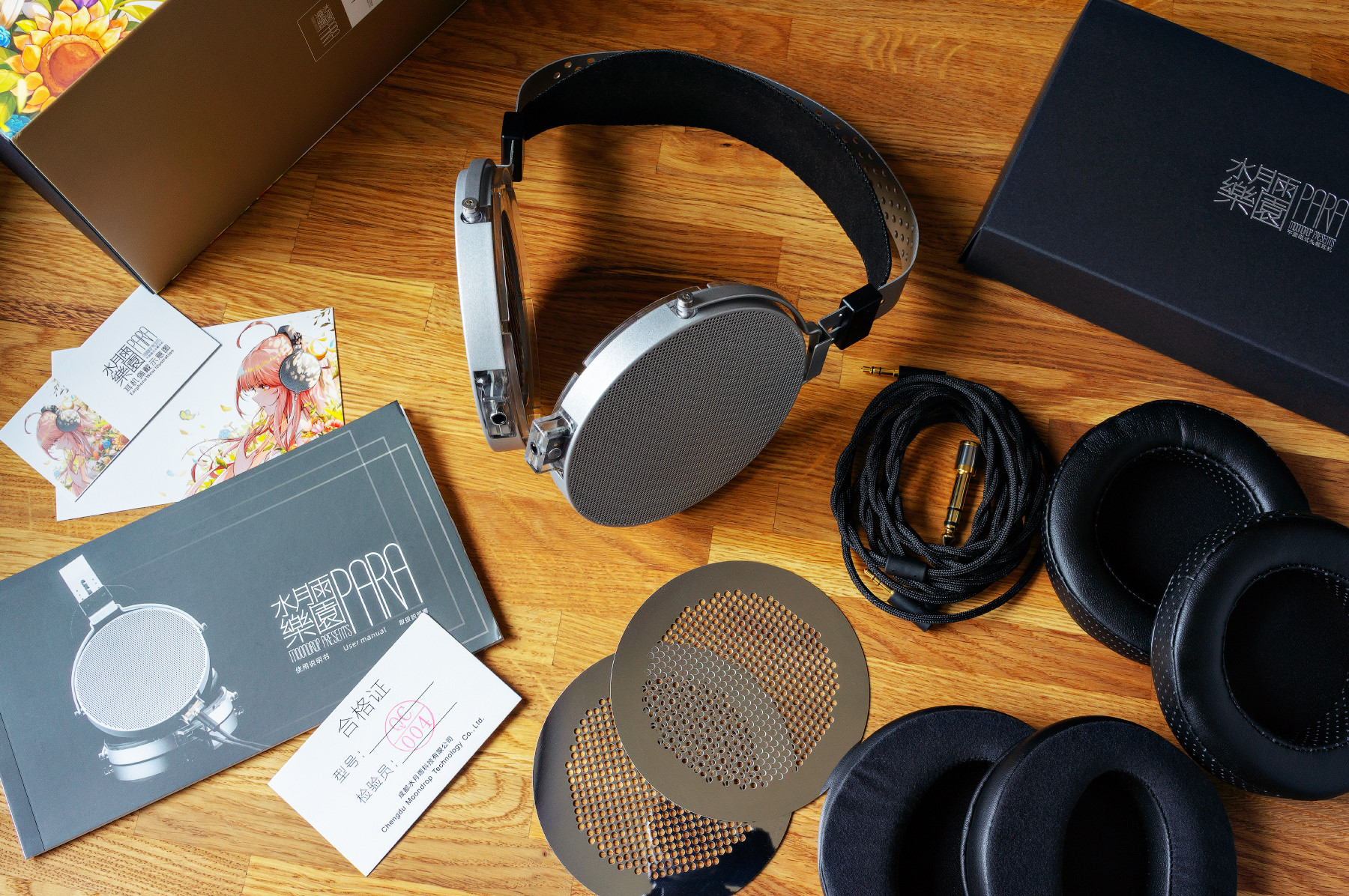
The box contains the following items.
- The headphones
- The 3.5mm jack cable. It’s some nice and lightweight black fabric-braided cable
- The 6.3-to-3.5mm jack adapter
- The additional pair of earpads
- Manuals and other papers
The package is secure, the presentation is impressive, no questions asked.
2. Technology, design, assembly
I think we should start with the technological features described in the manufacturer’s marketing assets.
Each driver uses 18 N52 magnets, where 52 is a magnet class, meaning that 1 CBM of such a magnet creates 398 to 422 kJ worth of magnetic energy. I have like no idea whether it’s a lot or a little, since I don’t even know what magnets are used in other planar drivers. The diaphragm is flexible and made of composite material, and the conductive tracks are silver and etched. The track topology is designed so that the tracks don’t affect the diaphragm tension.
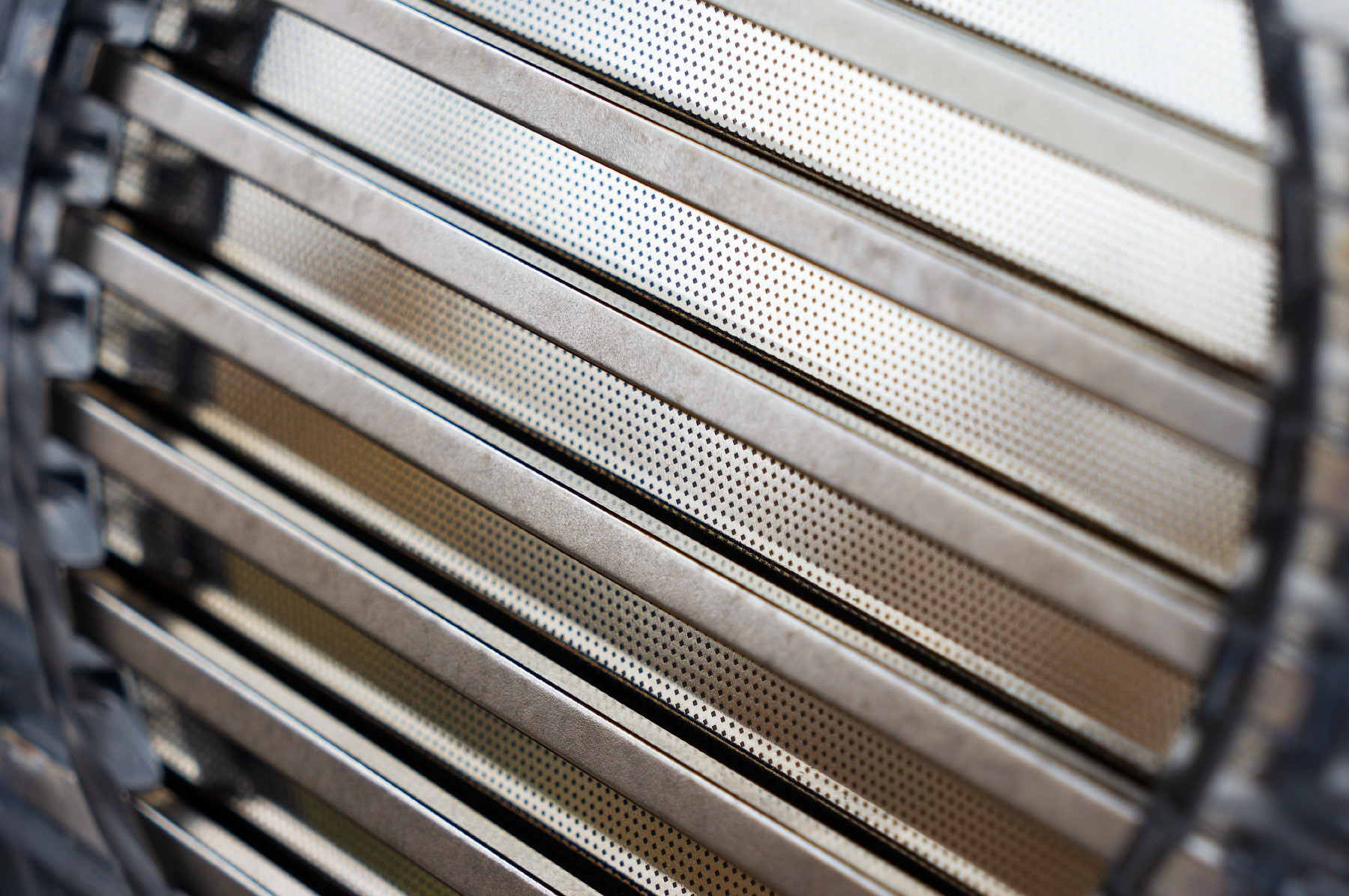
As in the VENUS model, the PARA use a structural element with a special cavity structure. Though in PARA, this element not only is made of better materials, but its structure is now improved, and the cavities themselves are kinda more… hollow. This same element was aluminum in VENUS, and is made of industrial-grade plastic in PARA. Whatever that industrial-grade plastic is, it certainly made the headphones lighter.
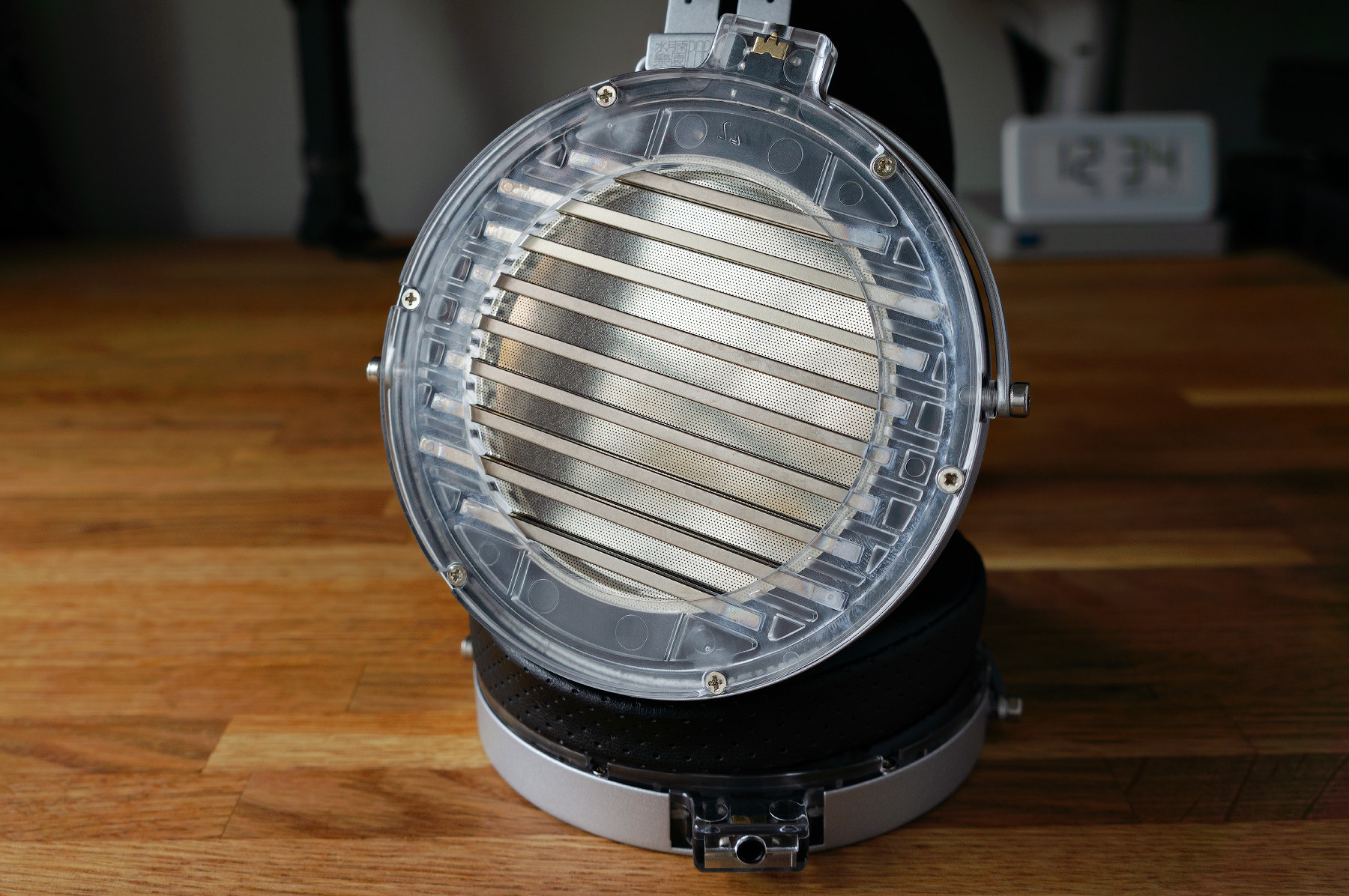
As always – no specific explanations, measurements and comparisons are given. None of the other manufacturers give those, if truth be told.
In my personal opinion, the headphones look great: the Moondrop brand approach with their deliberate minimalism, clean lines and an abundance of metal elements is here once again. No color accents, only silvery metal, as well as transparent plastic.
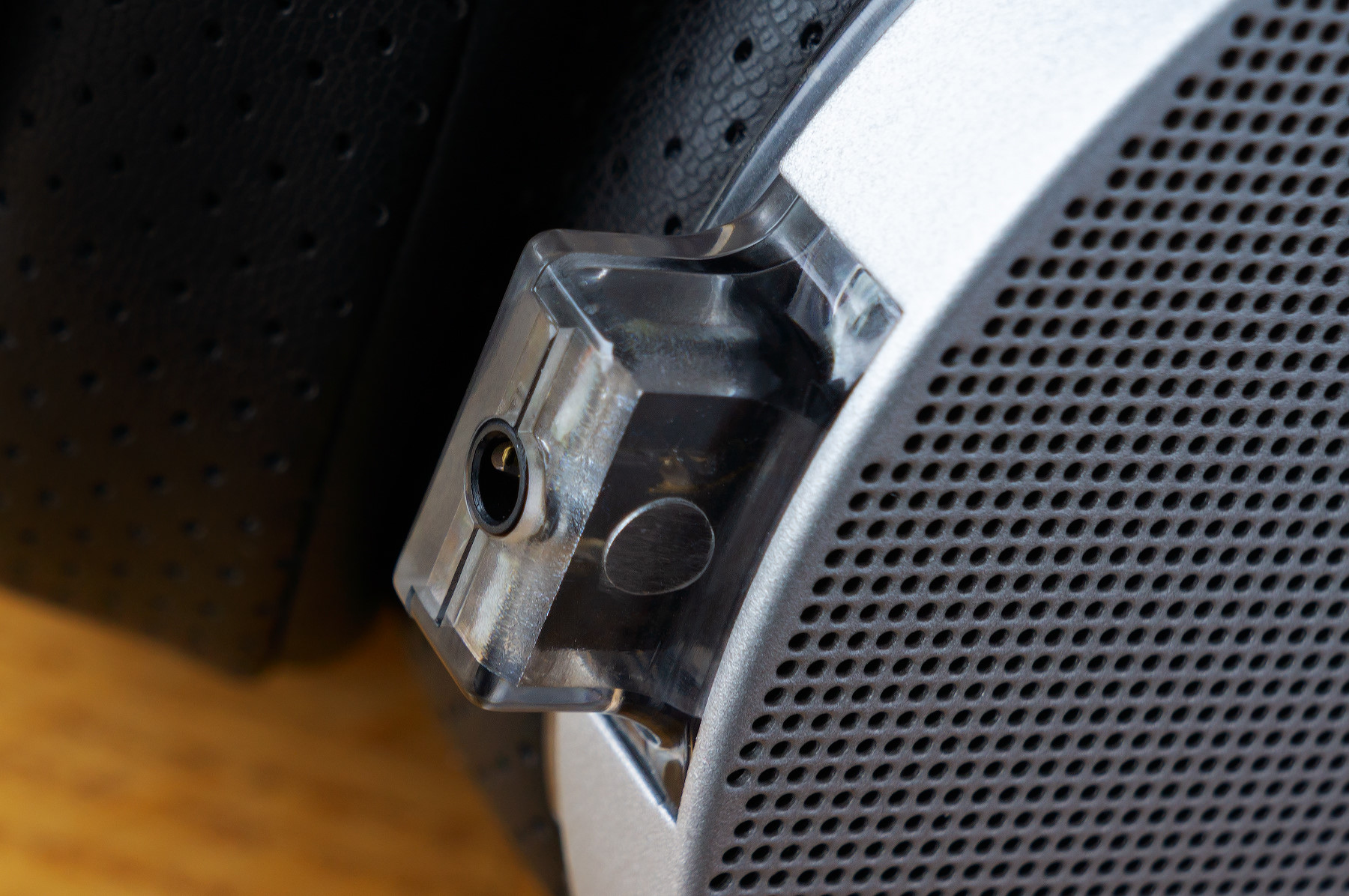
Everything is done very, very well, and assembled with tiny screws only – any glue or rivets are nowhere to be found.
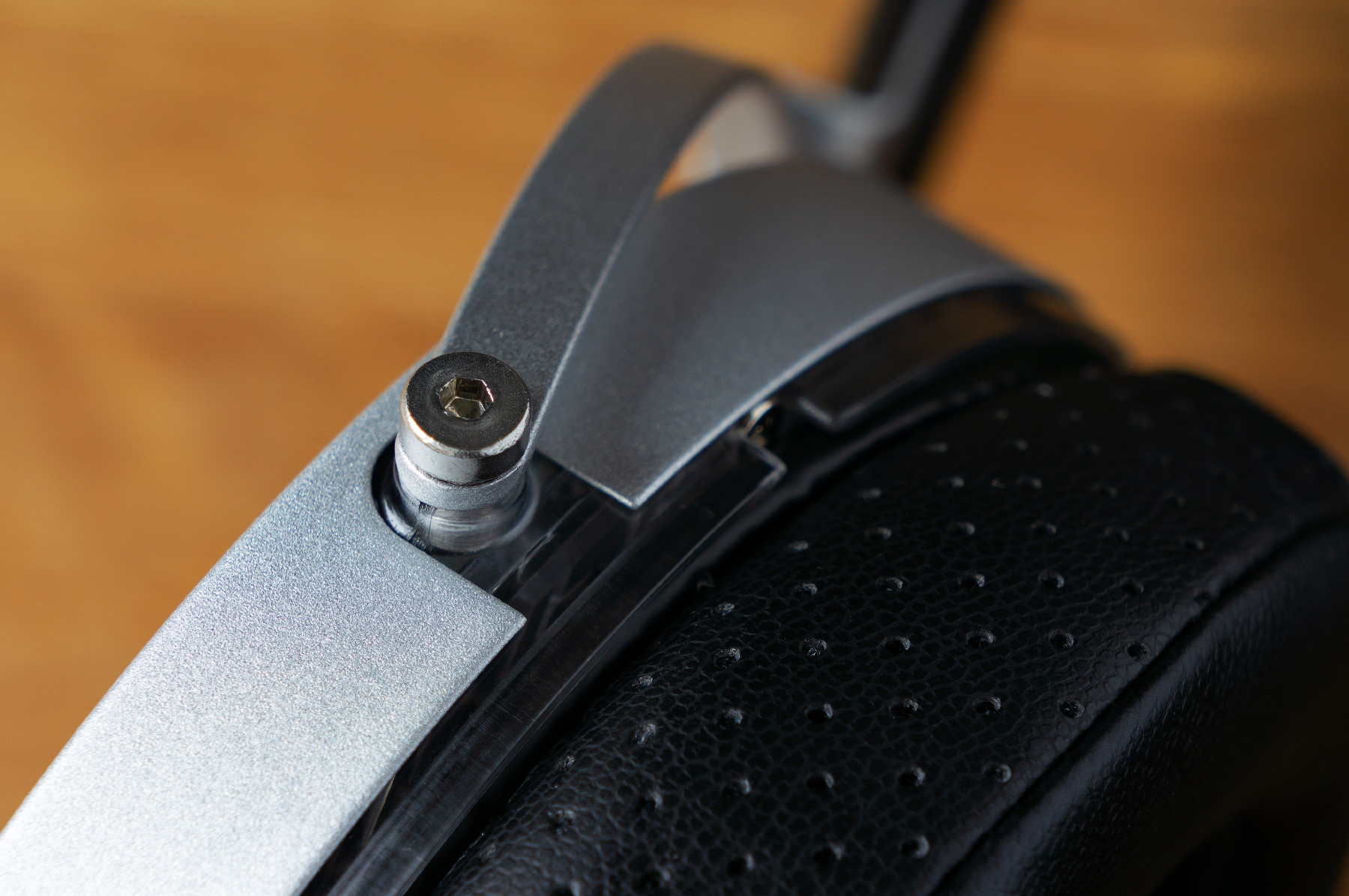
If you’d take a look at the earcups, you’d notice they’re plastic with some kind of metal-containing coating – they become very cold at lower temperatures. Neither the earcups nor the headband can be stained with fingerprints – you can palpate those however you want and as much as you want. Good for users, bad for forensics (I’m joking).
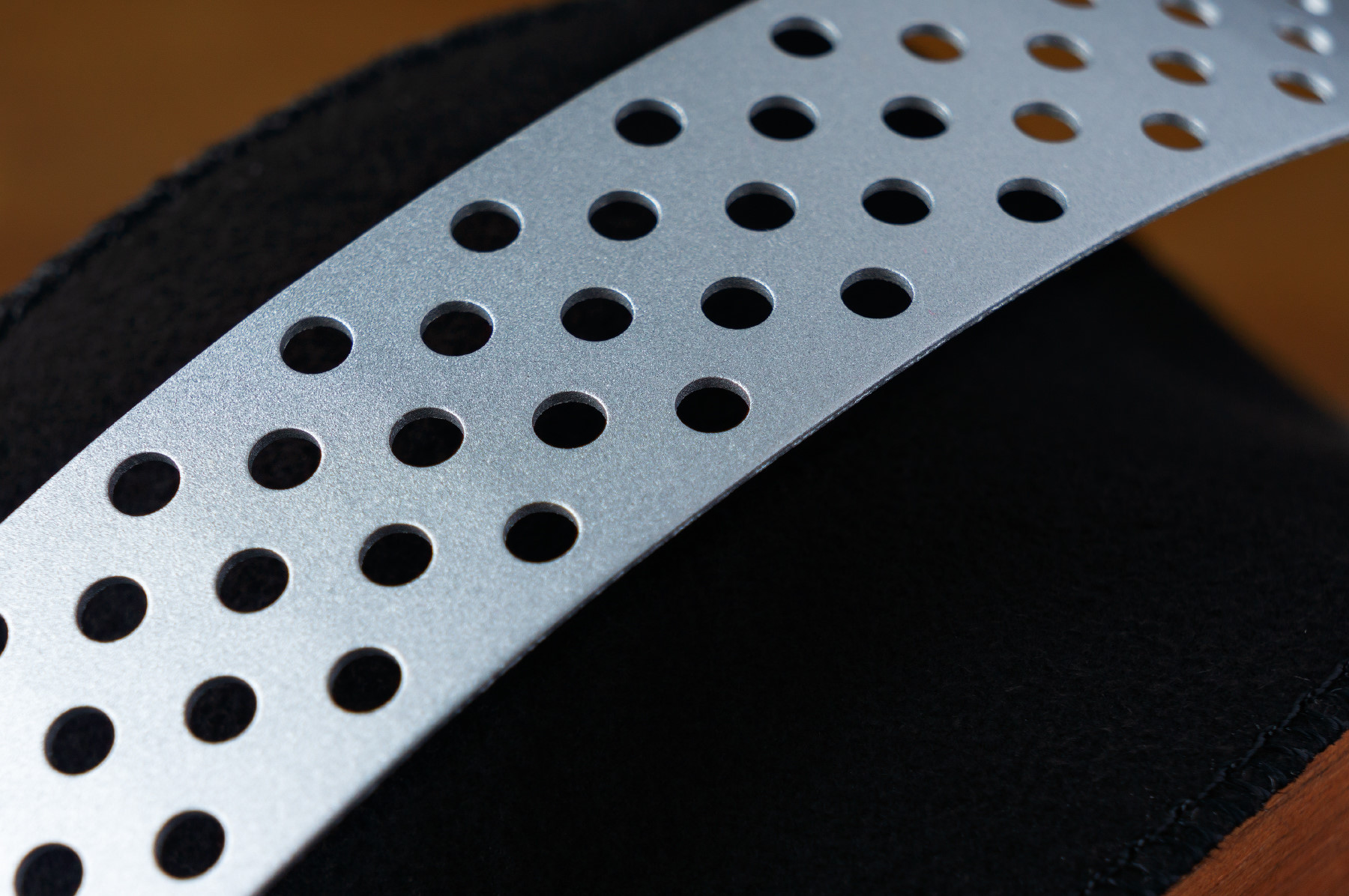
The headband pad is thin and made of some synthetic velvet-like material.
On the headband, there are some stylish, but incomprehensible designations for the left and right earpieces.
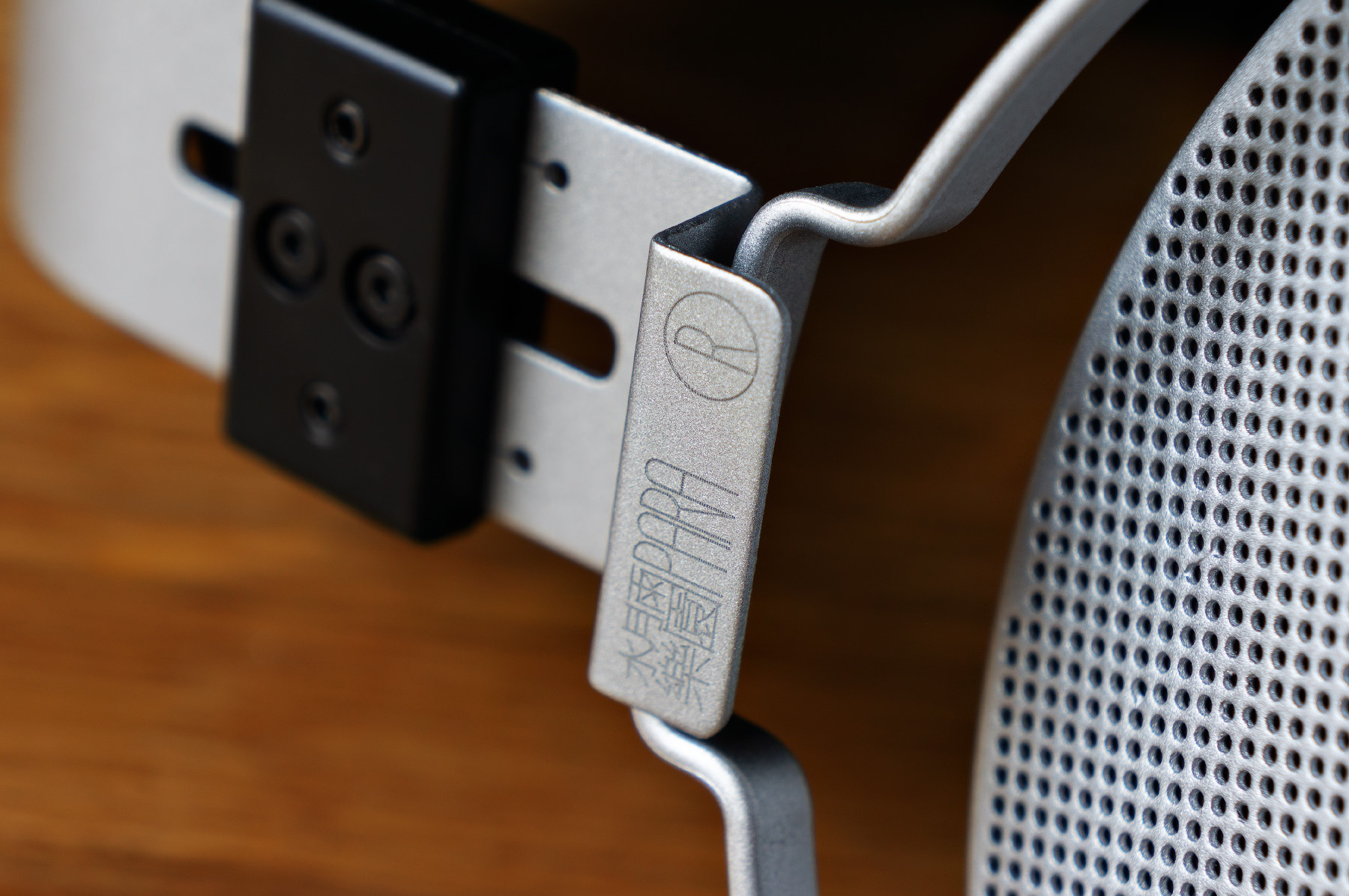
I personally like the design a lot: these are probably some of the most beautiful headphones I’ve ever seen. I’d rate the materials and assembly as excellent, although I can say nothing about the build durability or strength (nor can other users), since the model’s just been released on the market.
3. Ergonomics
The earcup pancakes rotate in two planes, the pressure against your ears is optimal, and the headband pad is wide enough to evenly distribute the headphone weight. The cable sockets, being designed at an angle, allow the connectors to stick out in a way to not touch your shoulders.
The earpads themselves are pretty standard: medium softness, right depth. These included earpads are better cushioned and feature an oval cutout to fit your ears. The outer part touching the user skin has a velour overlay. Their thickness is consistent across the entire area. I’ll refer to them ‘velour’, don’t get confused.
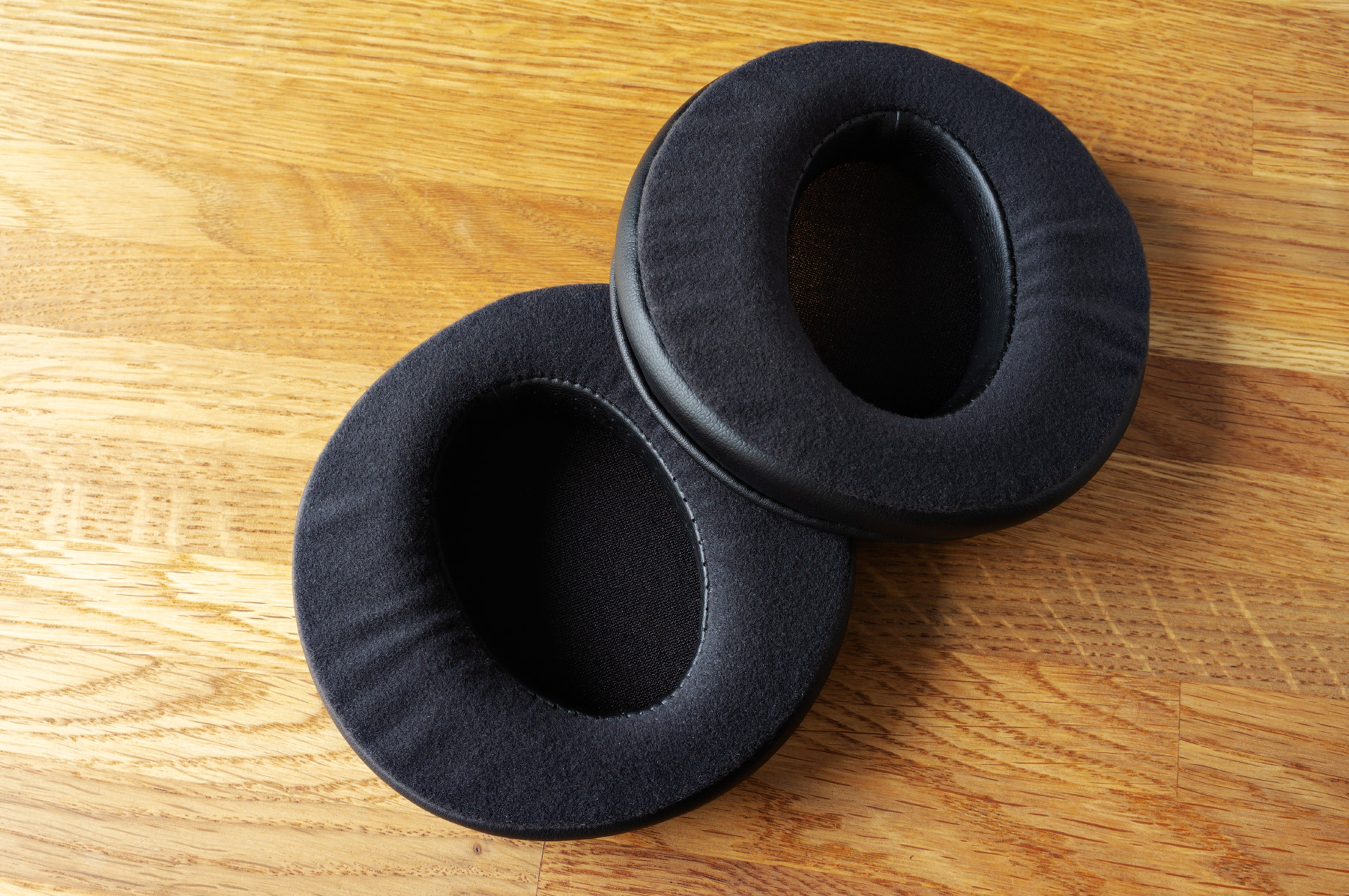
The additional earpads have a more classic design with a simple round ear cutout, and are lined with perforated faux leather on all sides. And they have a visible bevel. From now on, I’ll just refer to them as ‘leather’.
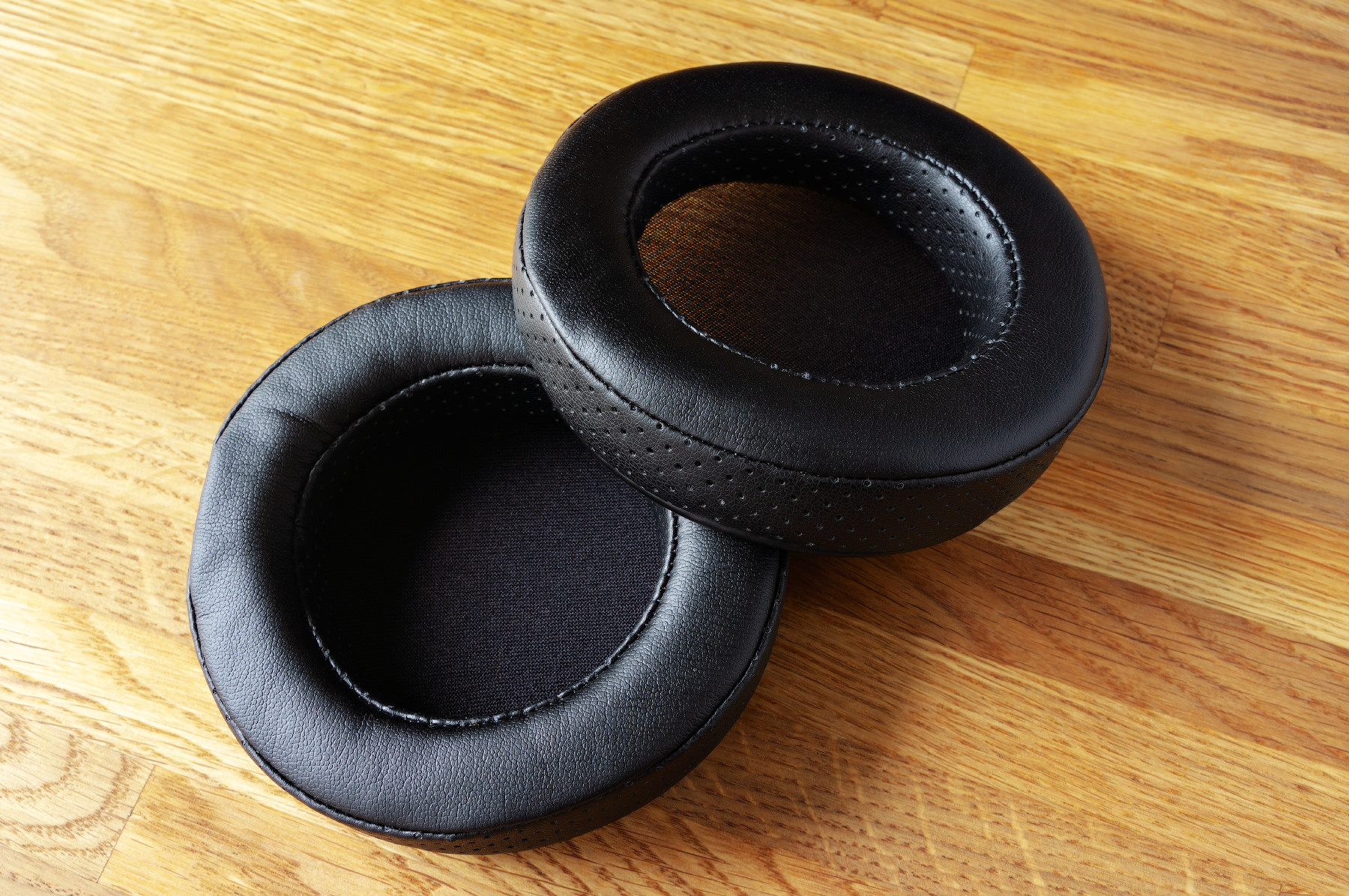
The headphones are pretty comfortable per se. Let’s try and find something clumsy in them!
The cable connection angle is somewhat… uninspiring. Others take it bolder.
The earpads are attached to the cups with magnets, though! This allows you to quickly take them off and put them on, but it DOESN’T mean you can replace them any quickly. Sad, but true. Back to magnets: some thin metal plates are inside to allow magnetizing.
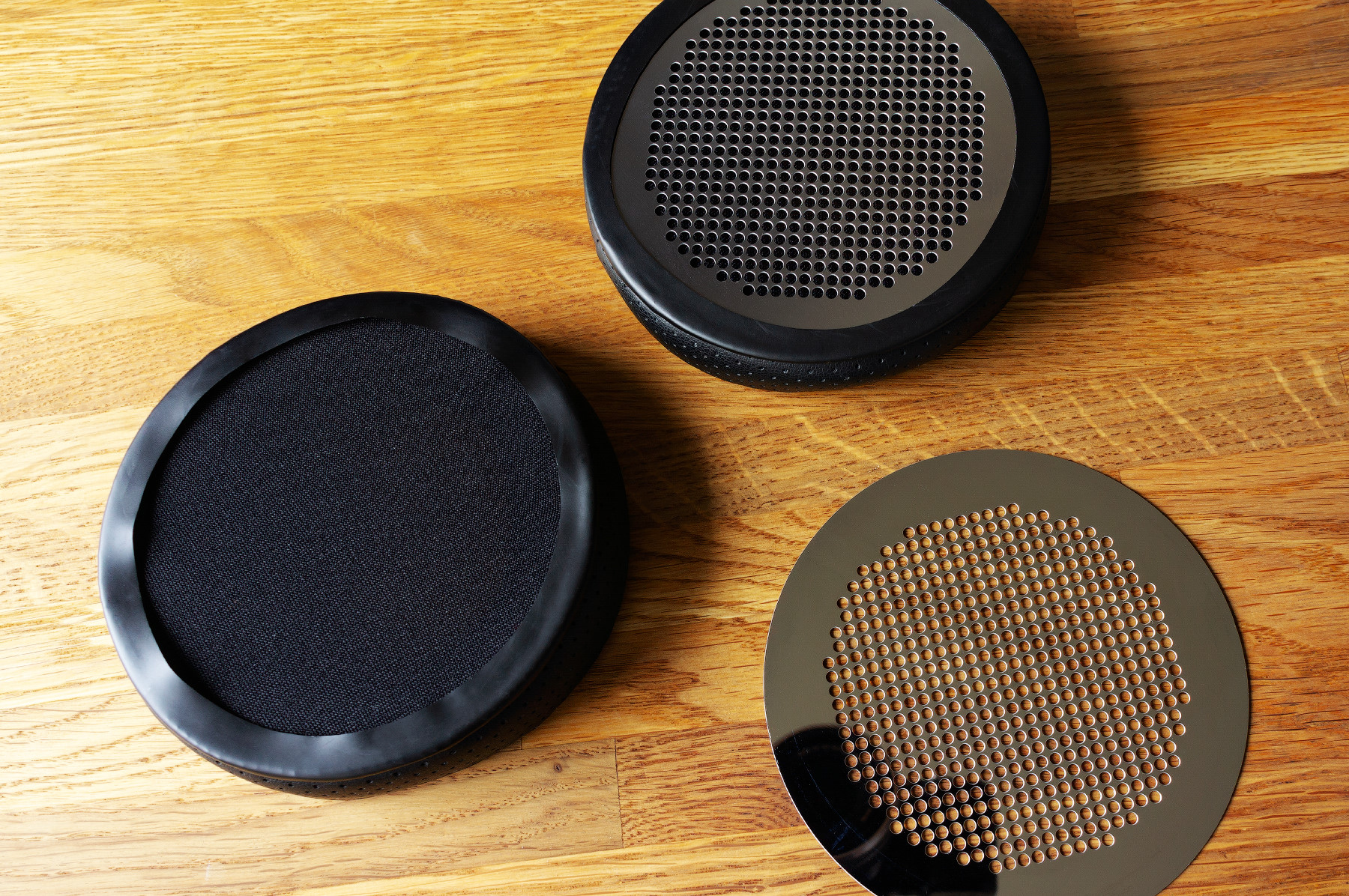
Another unsolvable mystery is that there are 4 earpads and only 2 plates included. I mean, sharing is caring, but… Moondrop, are you alright with that? It doesn’t work at all, since you need to first remove the previous earpad pair, remove the metal plates, insert those plates in your new earpads, then magnet those earpads in place. Is there something wrong with equipping earpad pairs with their own metal plates? Would this make the headphones price rocket up? Please tell us where to buy an additional pair of those plates, I beg you. What’s the lifespan of the earpads given the need to take out and insert the plates who know how many times a week?
Another catchy question would be ‘Do these plates affect the sound?’, but we’ll take a look at it by ourselves later.
Fun fact: the additional earpads aren’t even mentioned anywhere in the brochure nor on the official website. No sign of their own metal plates on those additional earpads. The additional earpads also change the sound signature in a quite dodgy way, and I’ll cover the topic below.
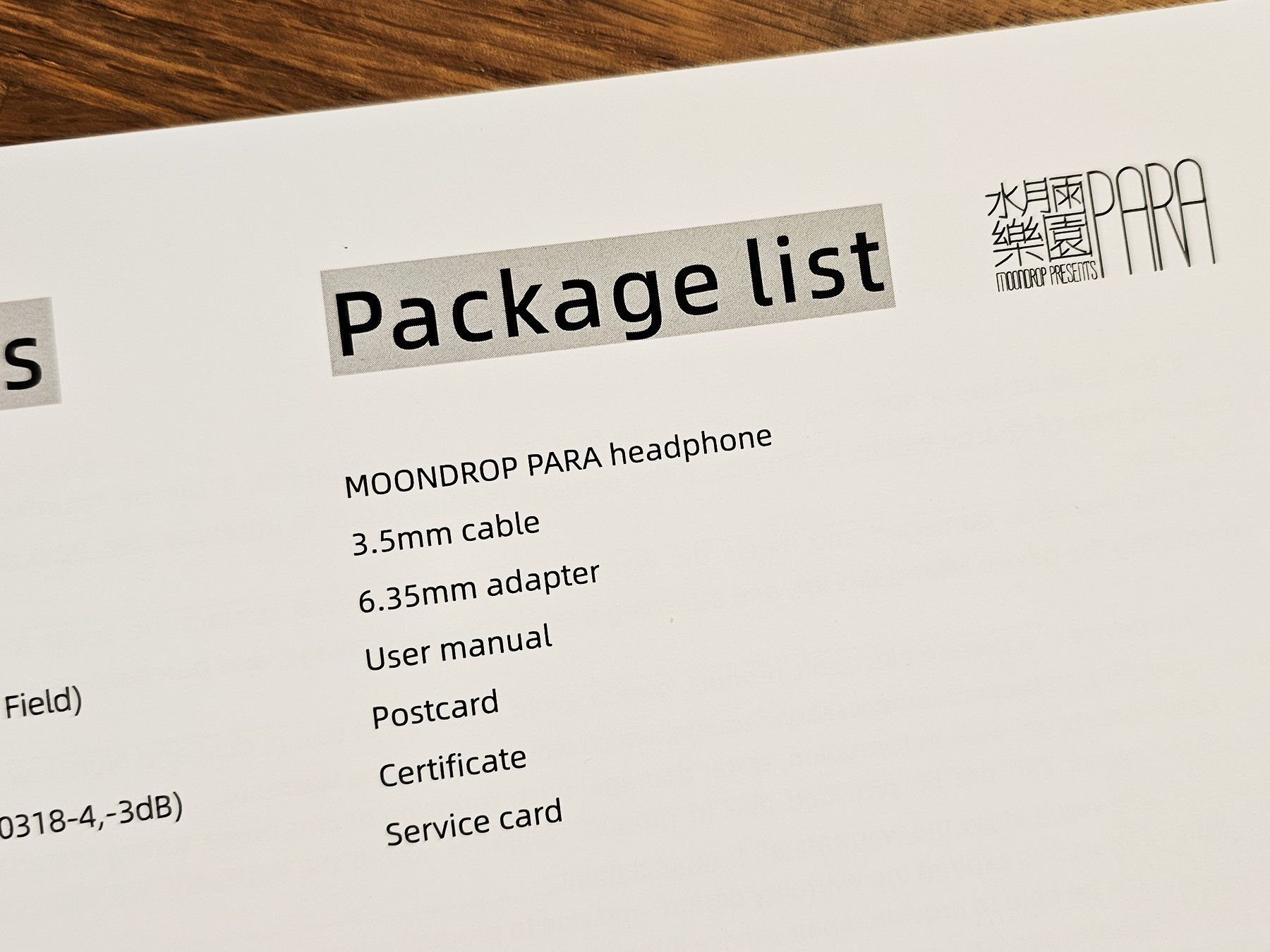
Moondrop, would I be right if I say you’ve decided to include those earpads at the very last moment? Blink twice if I’m right.
The earpads don’t feel reliable, to be honest. After just a few days of active use, the cushioning material inside shifts slightly, the shape gets kinda deformed. I have no guesses as to how long these will last.
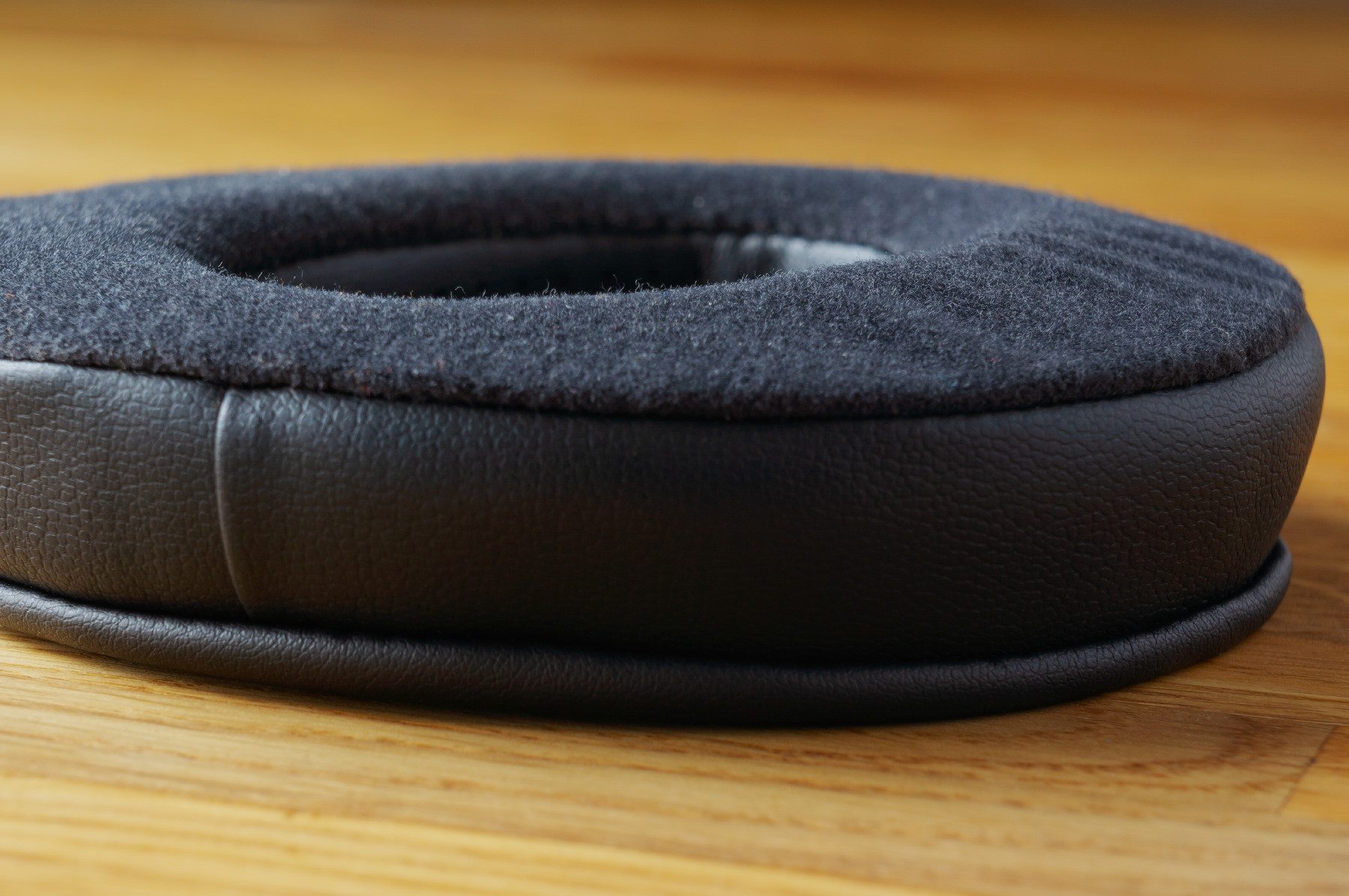
Let’s summarize: the ergonomics is good and well designed, the headphones are comfortable to use and are suitable for almost any head size. At the same time, you can’t quickly replace the earpads (given the additional earpads included, it kind of suggests that you’d want to replace them every once in a while) since the mounting plates need to be taken from one and inserted in the other pair manually, and the earpads start to deform in the first weeks of use.
Another weak point is, of course, the weight.
4. Quick specifications overview
- Design: over-ear, open-back.
- Driver type: planar.
- Membrane diameter: 100 mm total, 85 mm for the useful space.
- Impedance: 8 (eight) Ohms.
- Sensitivity: 101 dB/mW.
- Connectors: 3.5mm jack (stereo).
- Weight: 525 g without cable.
5. Subjective sound impression
The earpads significantly change the sound signature of the PARA, so we’ll cover each of the pairs separately.
5.1 Sound with velour earpads
With the velour earpads, the PARA deliver a lively and realistic sound with balance and airness for key properties.
Subbass is extended and perfectly smooth by ear without ‘narrow’ accents in any section. It’s really very dense and powerful, and at high volume, the earpads even vibrate noticeably. In this area of the frequency range, the PARA don’t add anything that isn’t in the track, but modestly and carefully reproduce the recording.
The bass is also speedy and pretty technical. No dirt, mumbling or detail omission: the lower frequencies are sterile (in a good sense).
The mid-frequency range goes on with the trend: it’s full of details, a bit ‘lightweight’, and a little brighter and ‘dry’ than I’m used to. Just in case: I’m only talking about the sound signature and personal preferences – not about that frankly clumsy tuning. The upper section of the mid-range is slightly emphasized, the area of about 8 kHz is highlighted (as in many models).
The ultra-high frequencies live their best life, so to speak. They are full-fledged and extend up to 20 kHz without any dips along the way. I can hear a curb at the 13 kHz, but this is exactly that part of the spectrum where different people can hear completely different things, so it’s extremely subjective here.
What’s the verdict? Formally, it’s a fantastically smooth (compared to the IEF curve) sound delivery, almost devoid of tuning flaws, and only slightly shifted towards the upper middle and increased airiness. You can define the sound as accurate, realistic, balanced, or sterile, dead, expressionless – it all depends on what you normally like or what you’re used to.
I’d personally say that this one is practically a neutral benchmark.
As for the sound stage, at such tuning, only one thing can be said about the instrument positioning, the width and depth of the stage, the recording quality retranslation: the PARA play it exactly how the track was recorded and mixed. The sound stage is only larger than usual because of the full range from 10 kHz and above.
The subjectively perceived amount of details is simply magnificent. On the other hand, the musical material should be perfectly mixed, because any tiny shit in the recording can be heard right away. If anyone bets you to distinguish mp3 from flac, choose PARA with standard earpads for this.
5.2 Sound with leather earpads
With the additional earpads, the PARA sound radically different focusing on the mid-frequency range. Here, the leading positions are taken by some unbelievable level of detail, instrument positioning and dirt.
Nevertheless, if you’re currently looking for headphones for competitive video games – there you go: the Moondrop PARA with leather earpads. The experience may be the best I’ve ever felt in terms of sound source positioning on a virtual stage (or, to be honest, the second best, since we still have the Focal Utopia). With the PARA, you can not only shoot, but also throw grenades, aiming at the enemy noise – that’s how tangibly the position and distance to the object are delivered.
The subbass is significantly reduced here. I mean, it’s present, it’s technical and fast, but is frankly insufficient. Somewhere around the lower frequency section, the frequency response graph is leveled and remains even up to the mid-range. The mid-range section is specifically detailed and surprisingly accurate: you can literally tell the different track elements one by one and basically follow them separately along the song. The mid-range is somewhat close to the listener, almost intimate. The upper part of the middle section, though, has a distinct synthetic hue on some tracks and can sound pretty unpleasant. For example, my favorite ‘Blue Train’ by John Coltrane sounds absolutely disgusting from any angle. I don’t think I’ve noticed such an effect in other tracks. Further up the range, everything sounds exactly the same as with velour earpads – airy, full-fledged, wide.
What’s the verdict? On the one hand, there’s a detailed sound with incredible instrument positioning and an average-sized sound stage, on the other – some seriously underdelivered subbass and a disgustingly unpleasant upper part of the mid-range in some tracks. In fact, without equalization, you can only enjoy the PARA with their included earpads with a very pretty small range of musical material. But, again, they’re incredibly good for gaming.
6. Sound source choice
For my listening tests, I’ve connected the headphones to the following devices.
- PC + RME ADI-2 DAC fs (‘High Power’ mode) – out-of-balance connection
- PC + RME ADI-2 DAC fs (‘High Power’ mode) with IEM output – out-of-balance connection
- PC + RME ADI-2 DAC fs (+13 dB at the line output, -7,5 dB in volume) + Topping A90 (High Gain) – out-of-balance/balanced connection
- Hiby R5 player (‘Gain: High’ mode) – unbalanced/balanced connection
I’d be glad to be all interesting and ingenious, but nope: there’s literally no difference at all between the above sources. Only the volume limit is different.
7. Measurements
For measurements, the headphones were connected to the RME ADI-2 DAC (-7.5 dB at the line output, SD Sharp filter) + Topping A90 in ‘Gain:H’ mode with a balanced cable. The measurements were made using a rig conforming to the IEC60318-4 standard – with an auricle and auditory canal simulator. For each of the earcups the measurements were made until 3 consistent measurements were obtained for the left and the right channels; any deviant measurements were excluded. The smoothing is indicated on the graphs. I’ve described the limitations of the rig and the headphones measurements in general in this article.
7.1 Velour (standard) earpads
Frequency response:
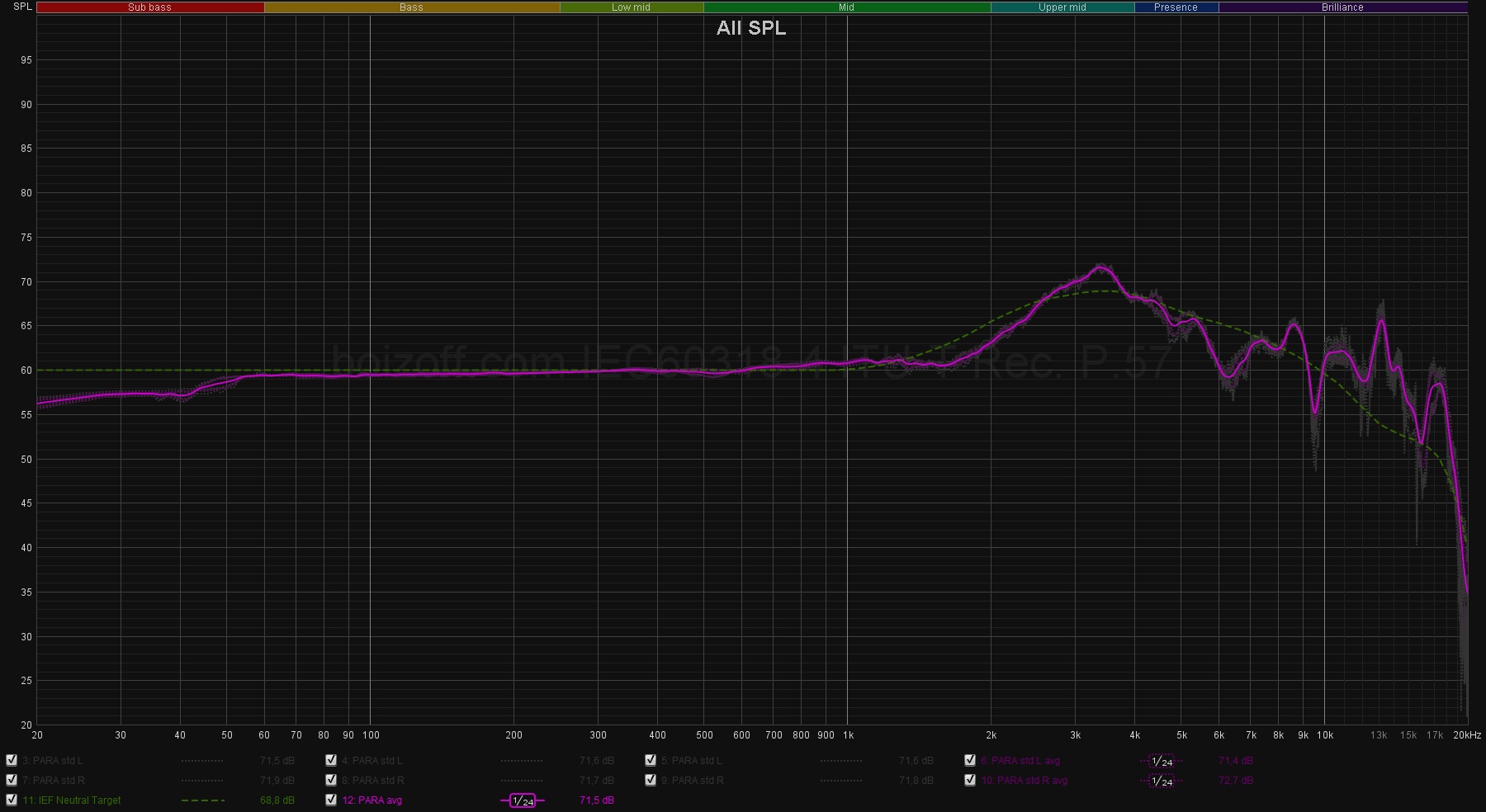
What we see:
- the subbass is just a wee bit lower than needed;
- the emphasis is shifted from 2.7 kHz (benchmark) to 3.4 kHz (factual), which results in a slightly lighter sound;
- the 8 kHz are narrowly emphasized, as it happens here and there;
- the section following the 10 kHz isn’t reduced, but don’t trust my rig here (I don’t) (see par. 4 of this article);
- any physical shifts, turns or changing the pressure against the ear don’t affect the frequency response, the measurement results are bluntly stable.
The above-described subjective perception confirms the measurements, with the exception of the part following 10 kHz, which my rig can’t measure in any reliable way. I’d say it’s not as aggressive as the graph indicates…
The left and right channels diverge, but only within 1 dB for the vast majority of the frequency range:
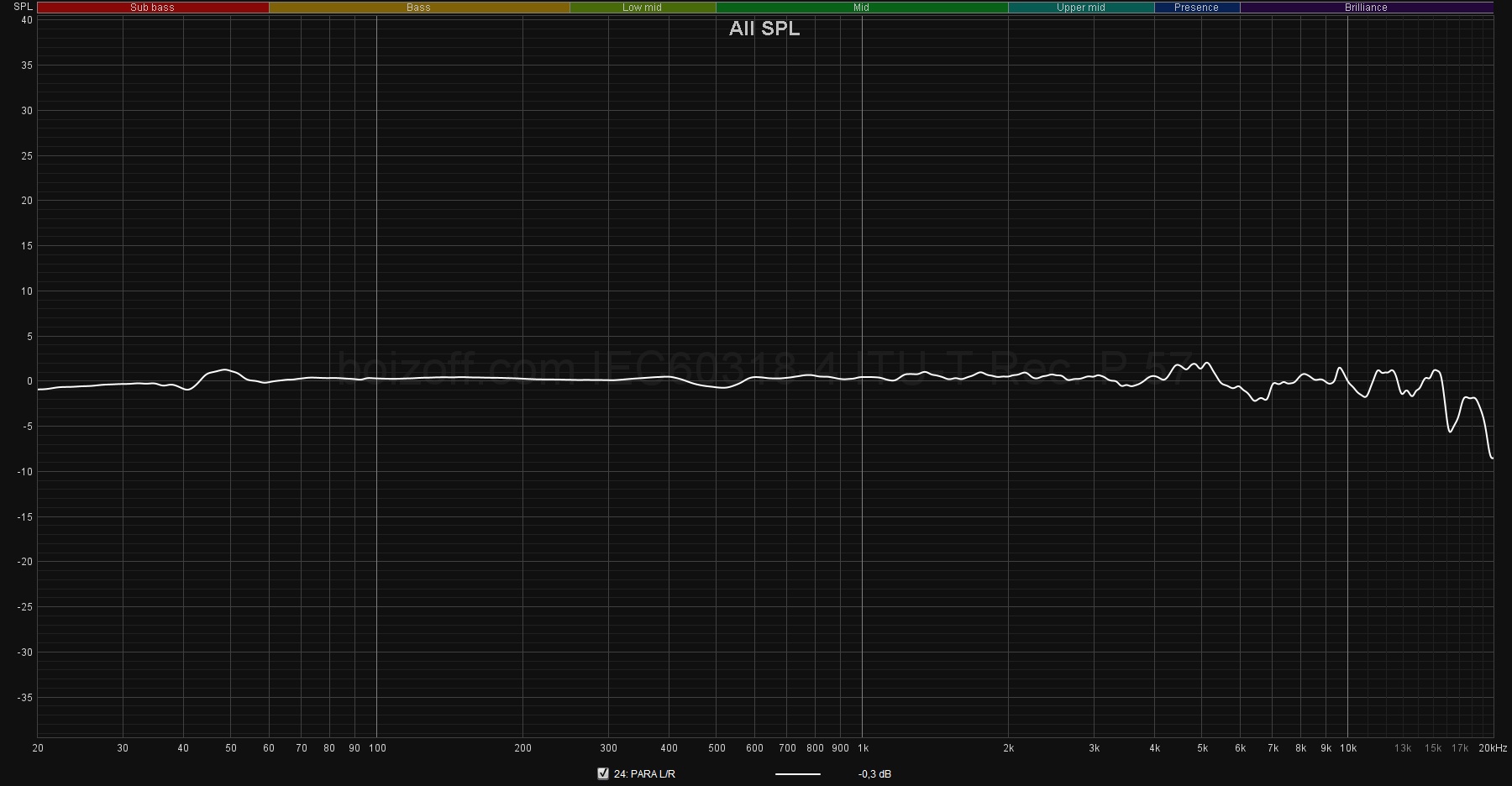
Well, the graph you can’t trust in an objective assessment (I really don’t own any equipment good enough to measure such parameters), but it can still be taken into account. Here’s the coefficient of nonlinear distortion:
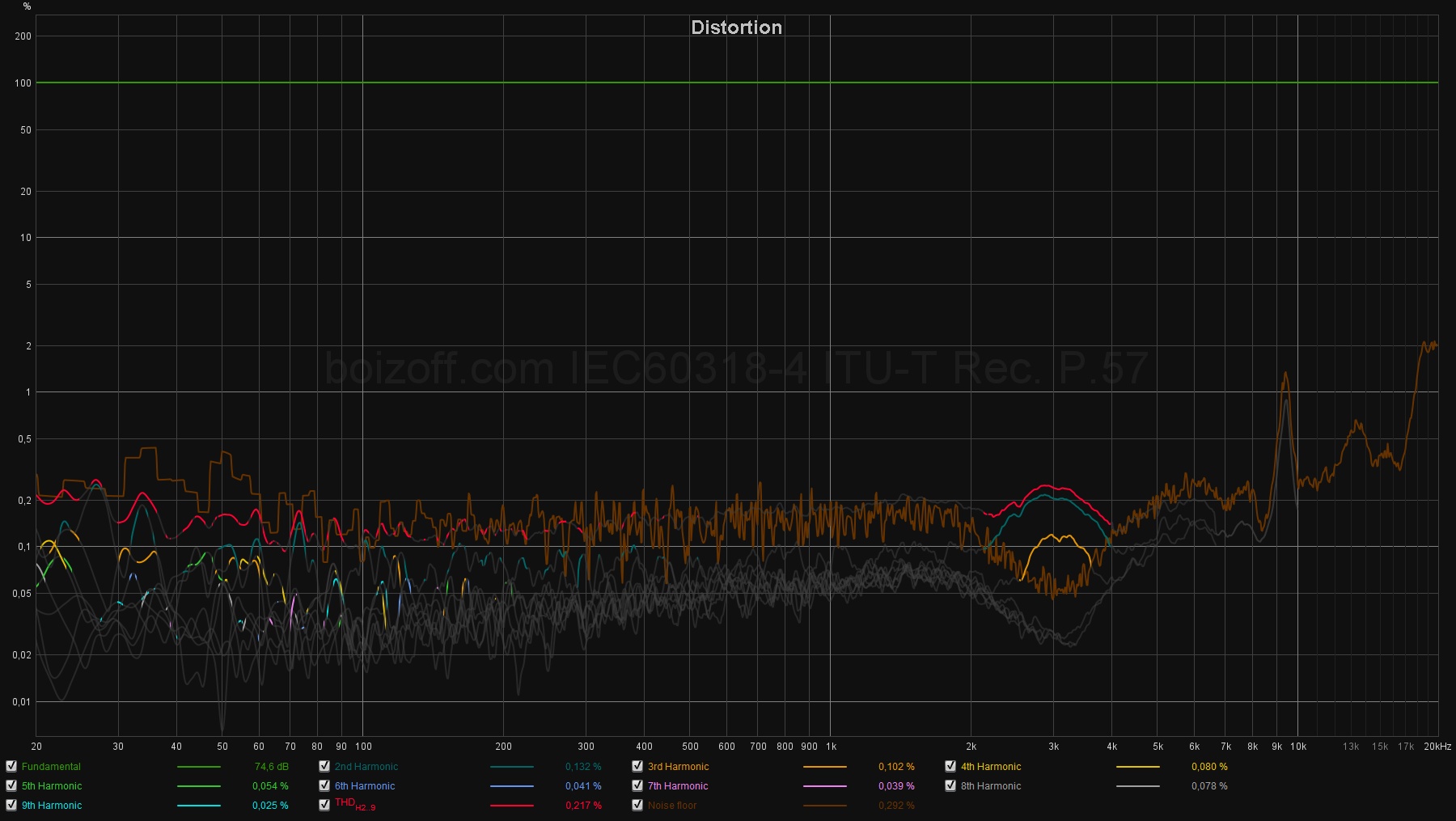
At least, it the 20 to 9000 Hz interval, the distortion doesn’t exceed 0.2%, which is just brilliant; and the manufacturer demonstrates their own measurement results like this:
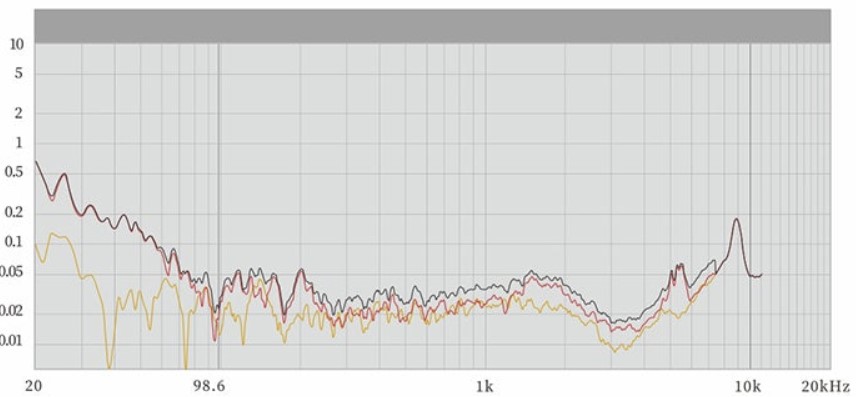
There is no legend nor any clarifications as of which curve corresponds to what parameter, but the graph is pretty similar to what I’ve got. Looks like my rig isn’t that bad. Curious!
7.2 Leather (additional) earpads
Frequency response:
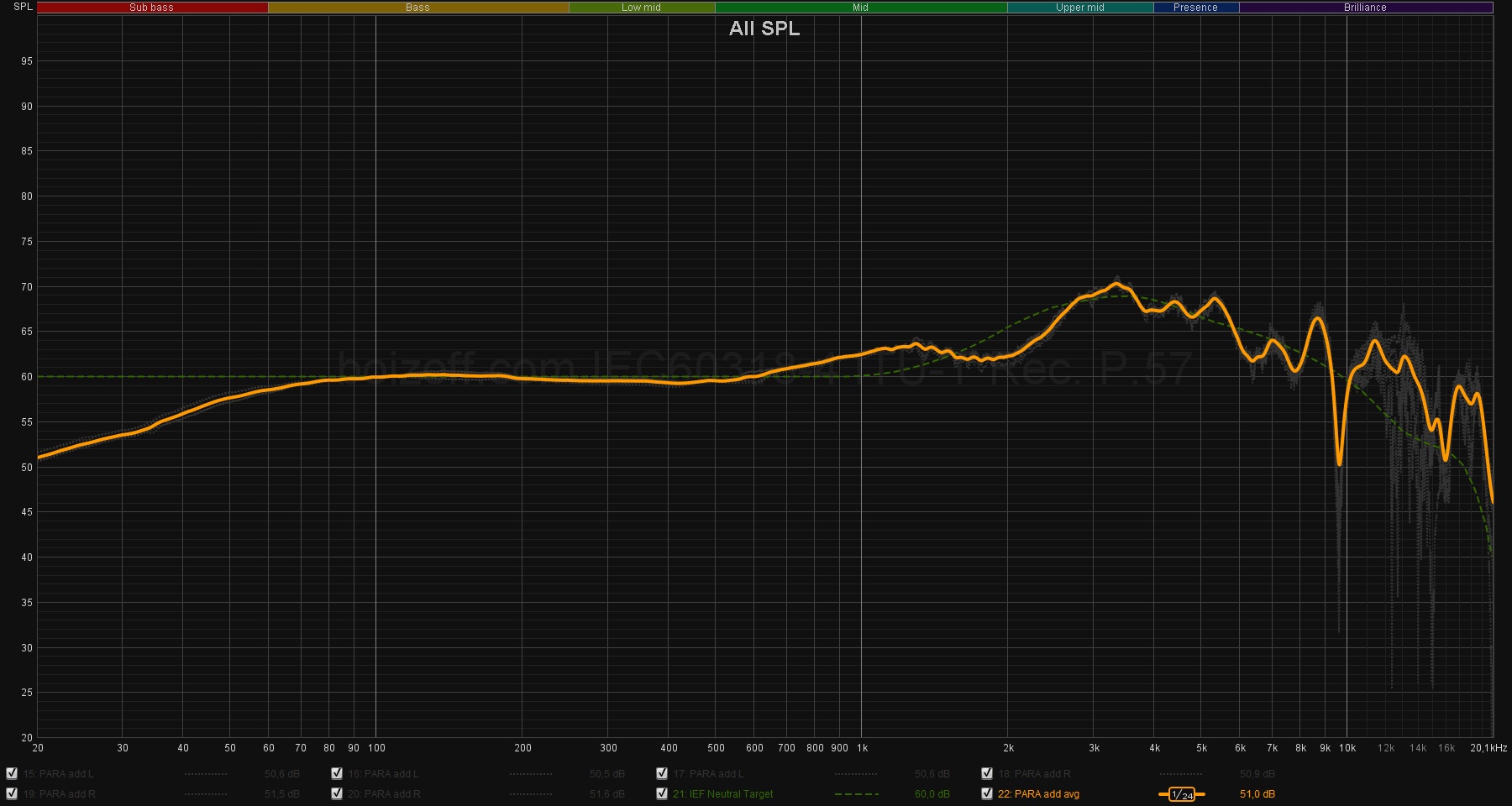
What we see:
- where’s the subbass, Lebowski?
- a ridiculous accent at around 5.5 kHz resulting in dirty hues at high frequencies;
- any physical shifts, turns or changing the pressure against the ear actually affect the frequency response at around 13 kHz.
The tuning also demonstrates a distinctive decision we’ve already seen in the case of, for example, the Focal Utopia or Kennerton Heartland at 500–4000 Hz:
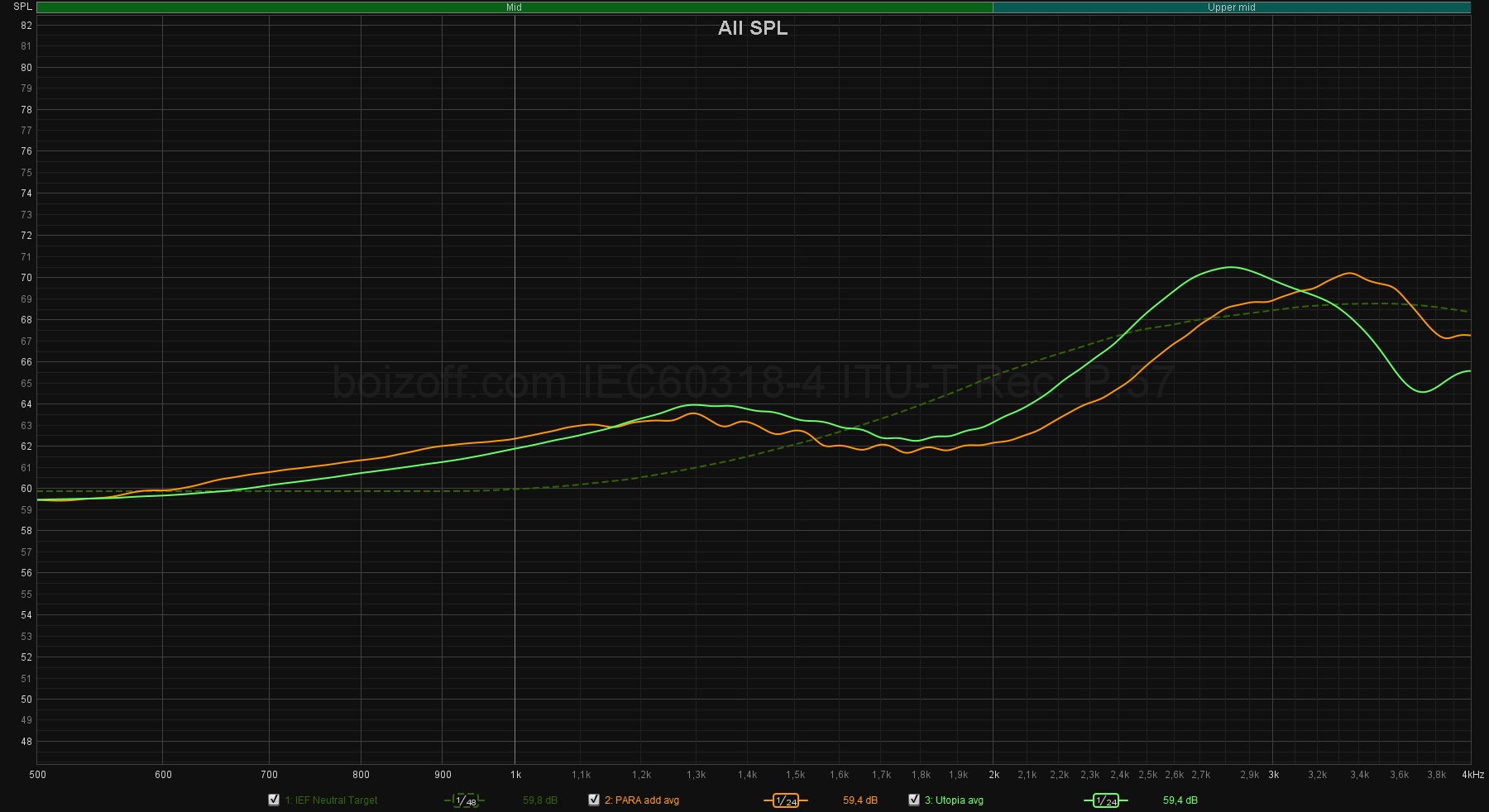
Such a trick with a rise at about 1.2 kHz and a decline at about 2 kHz gives the feeling of precise sound source positioning, which is mentioned in almost any Focal Utopia review (in mine, too). The flip side of the coin of this is the subjective narrowing of the virtual stage, which is also attributed to the Focal Utopia quite often.
Well, they do – just a little bit. Take a look at the 13 kHz area. It would be just awesome if the manufacturer provided these same plates, only not perforated, but with a simple hole corresponding to the useful area of the membrane. Just a flat metal ring would make me so happy.
8. Equalization tips
I don’t use automatic equalization calculators – I select the settings manually instead. I guess I just like the process, and I believe that the equalization must not suppress the headphones’ own signature, but should only eliminate the obvious flaws in their sound settings.
The following recommendations are based on this position.
8.1 Velour (standard) earpads
With equalization , you can try and correct the following.
- A slightly lighter sound character you don’t like
- The frequency response end following the 10 kHz, if the sound doesn’t seem airy, but rustling
- For real nitpickers – a 20–45 Hz section
This is how we do it:
- we remove the emphasis on the 3.5 kHz: Gain=-2.5, Freq= 3.5 kHz, Q= 8.0, a bell-type filter;
- we omit everything following the 10 kHz: Gain=-6, Freq= 10 kHz, Q= 1.0, a shelf-type filter;
- we raise the 20-45 kHz section (by ear, there’s no difference at all): Gain =+2, Freq= 55, Q = 1.0, a shelf-type filter.
Here’s what we get:
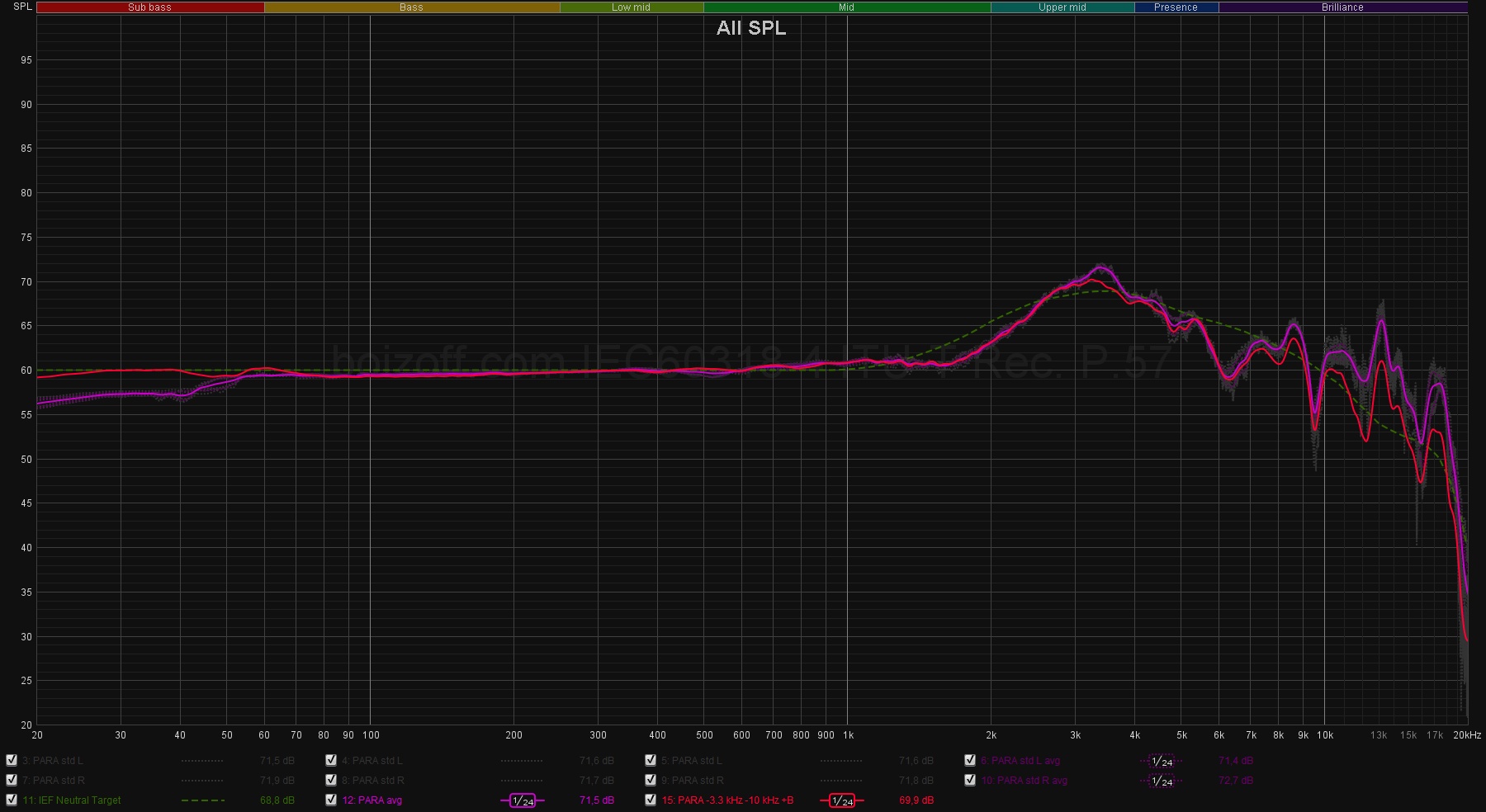
Instead of the second step, the lucky owners of the ADI-2 DAC fs can simply turn on the NOS filter, due to which the upper-frequency section is reduced by default (see the instructions, par. 31.4).
8.2 Leather (additional) earpads
With equalization , you can try and correct the following.
- That radical lack of subbass
- The emphasis at around 5.4 kHz, which results in that dirt in the tracks
- Again, the frequency response end following the 10 kHz, if the sound doesn’t seem airy, but rustling
This is how we do it:
- we remove the overhanging stuff at the initial frequency response section: Gain=+12, Freq=20 Hz, Q=0.5, a shelf-type filter;
- we remove the hump at the 5.4 kHz: Gain=-4.5, Freq=5.4 kHz, Q=7.0, a bell-type filter;
- we omit everything following the 10 kHz: Gain=-6, Freq= 10 kHz, Q= 1.0, a shelf-type filter;
Here’s what we get:
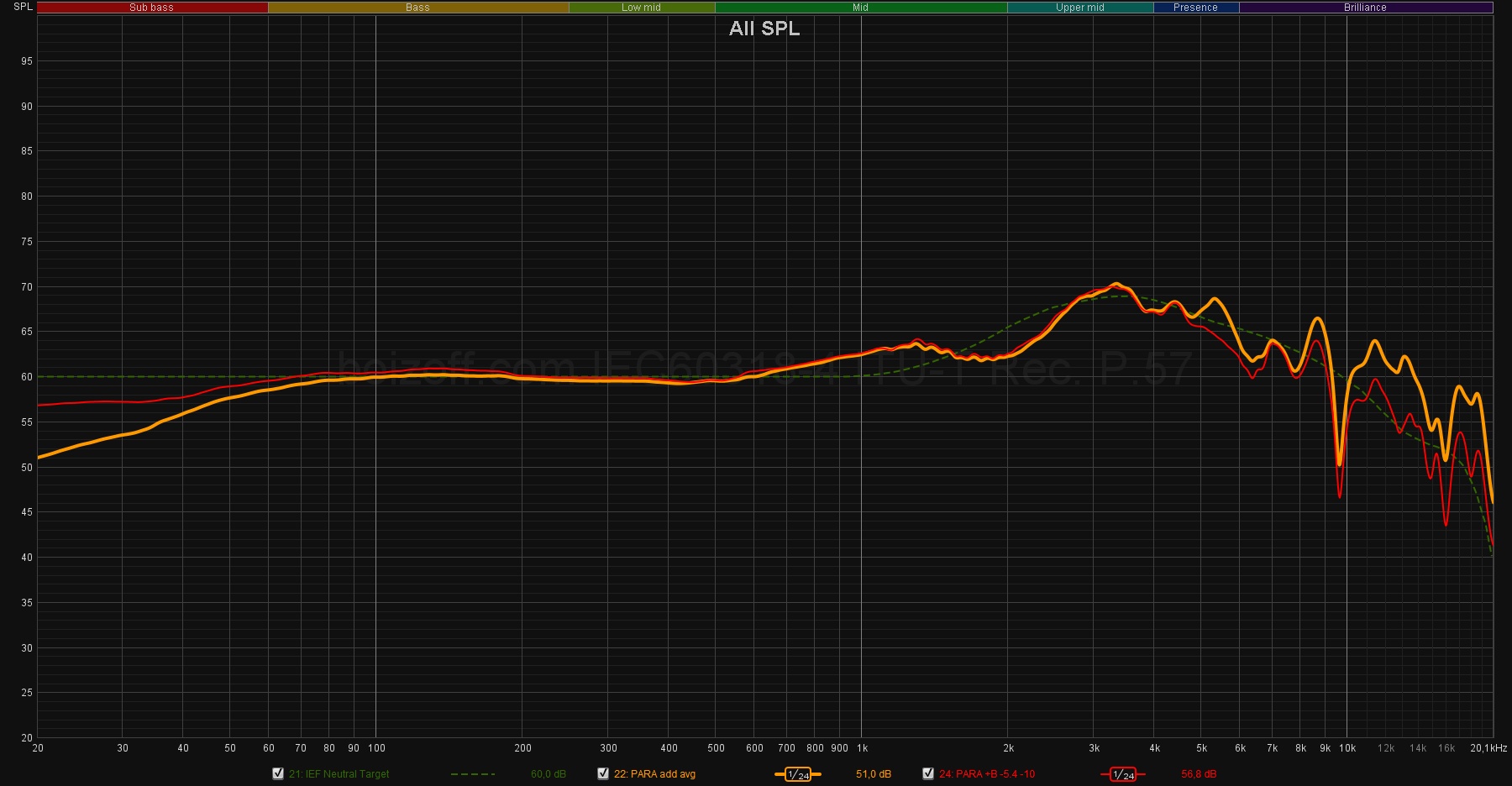
9. Comparisons
The other headphone frequency response was compared with PARA with velour (standard) earpads. Before equalization, of course.
9.1 PARA vs HiFiMAN Sundara
These fly in the same skies in terms of price, both models are planar, open-back. Frequency response:
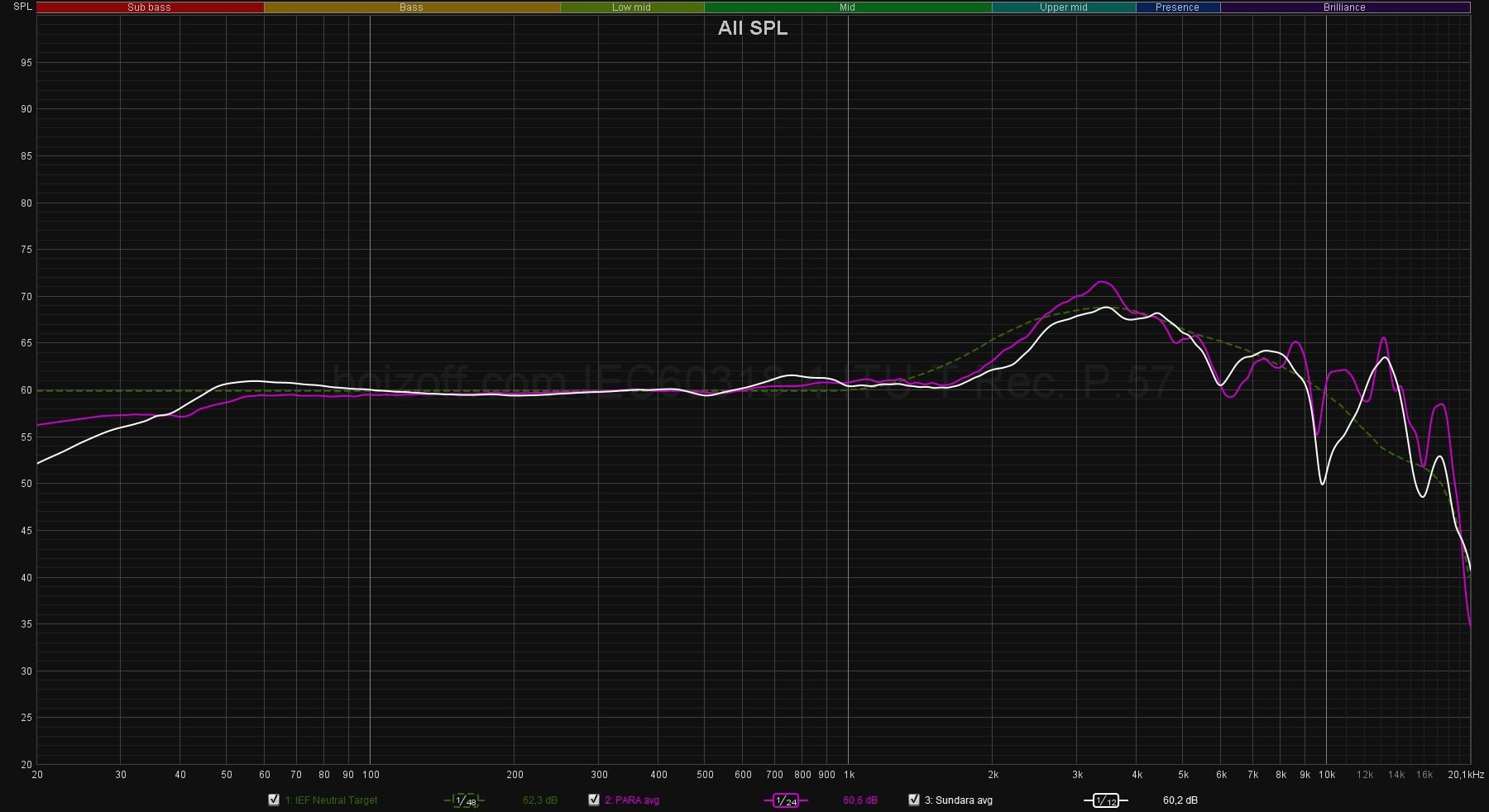
The Sundara (review) demonstrate a less aggressive middle section, as well as 140 g less in weight.
The PARA give us some regular subbass, no dip at the 10 kHz, a nice cable, higher overall manufacturing quality, additional earpads. These are also less picky when it comes to the sound source power.
9.2 PARA vs Kennerton M12 Titan
Planar and dynamic versions, though the M12 Titan are some $55 more expensive, closed-back. Frequency response:
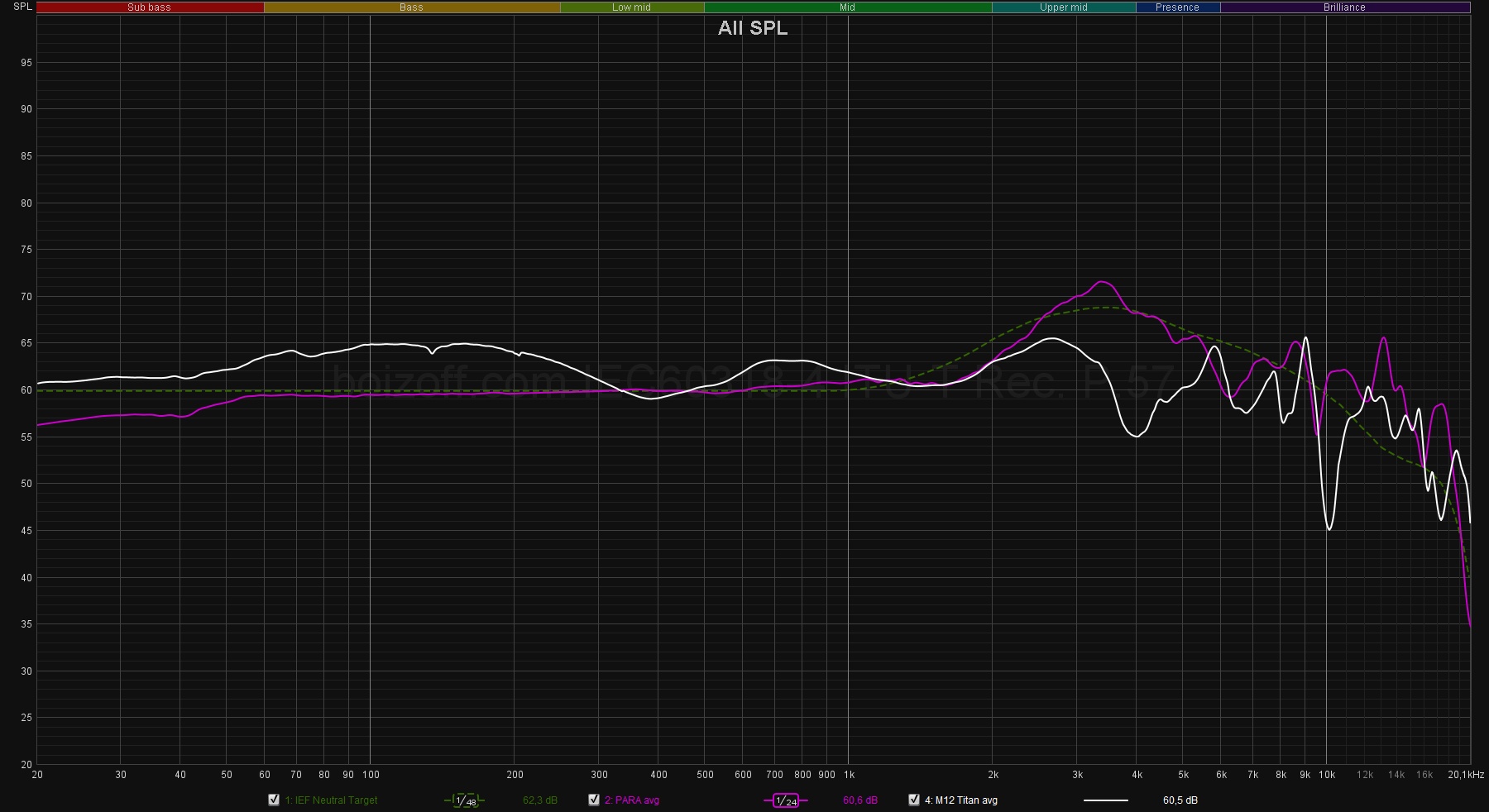
The Titan: a weight of 135 g less, not so picky for the sound source power, a bag in kit, a closed-back design, no client support troubles (since they’re located in my city).
As for the PARA, there’s a full-fledged mid-range section, less discrepancy between the left and right headphones, lower cost.
I won’t even try to compare the tuning, since one of those is ‘tasteful’ and the other is neutral. It’s just a matter of what you personally like.
9.3 PARA vs AKG K612 Pro
Planar and dynamic models, both open-back, the K612 Pro feature a dynamic driver and costs almost half the price. Frequency response:
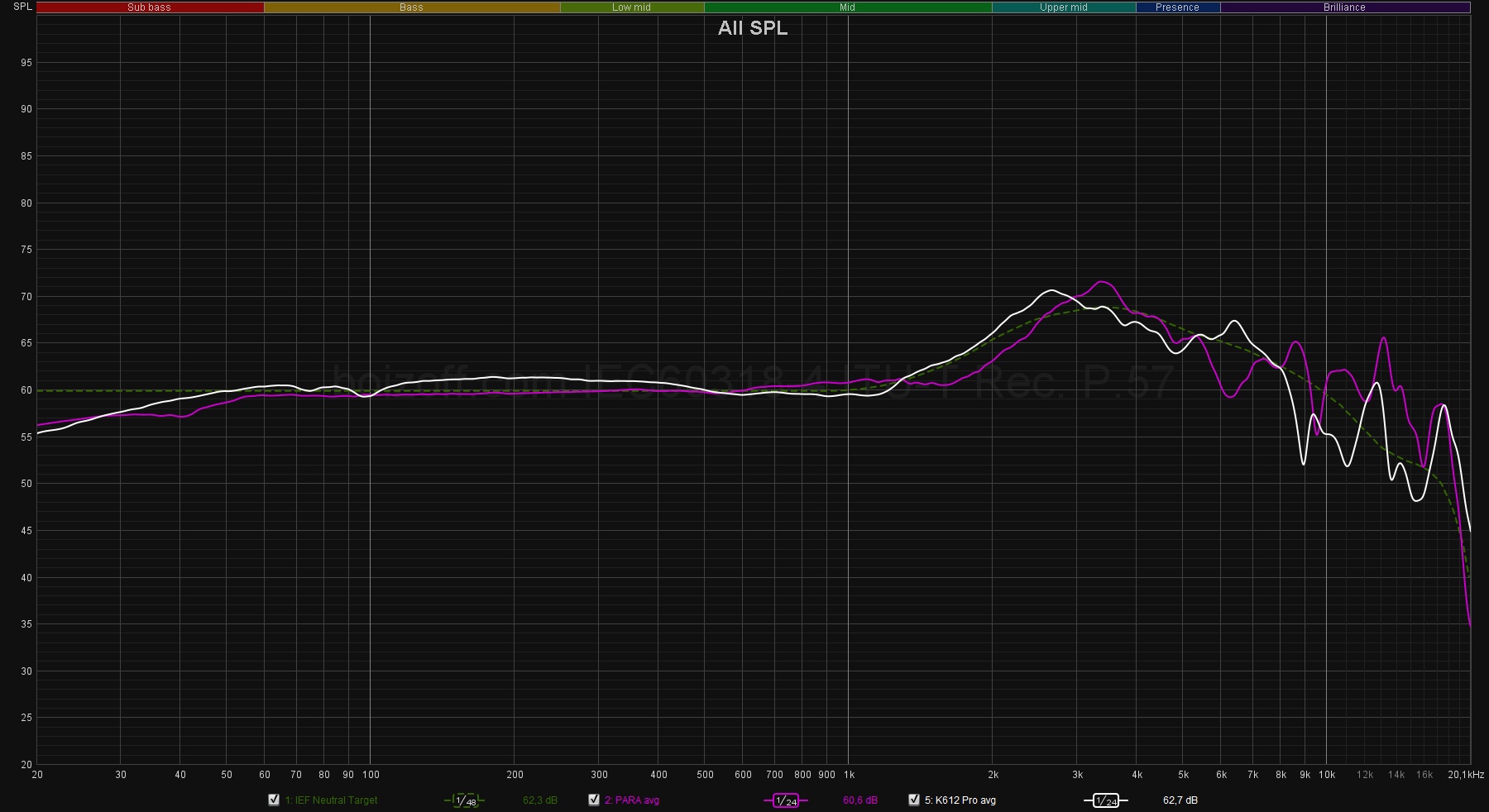
The K612 Pro weigh less by 290 g, the tuning is closer to neutral, and the cost is radically lower.
The PARA does it with a replaceable cable, subjectively more weighty bass and subbass, more detailed ultra-high frequencies, less discrepancy between the left and right headphones, higher overall manufacturing quality and more durable materials.
10. Summary
This is a FANTASTICALLY interesting model. I’m pretty sure it will be on everyone’s lips for a very long time to go. The ‘Sundara 2.0’, ‘the new benchmark of neutral tuning in the $300 category’, ‘the endgame of the low-cost segment’: this all relates to the Moondrop PARA quite well.
Taking into account some very low nonlinear distortions, it’s an excellent model for equalization and sound mixing. To be completely fair, if the PARA aspire to be used by professionals, the manufacturer should probably prioritize an essential requirement: the consistency of parameters of different instances. And I can’t say I could assess the PARA situation in this regard.
I don’t know, it feels like the manufacturer was a little hasty with the release and didn’t find the time to perfect every aspect. It’s actually obvious: the odd additional earpads left unmentioned in the manuals, as well as the absence of an additional pair of metal plates tell the story. They include a balanced cable, though: thank you very much. Good news is that you can actually get really close to a certain conditional ideal sound by experimenting with the PARA earpads. Therefore, my hopes are high: my New Year wish is for the manufacturer to fine-tune the PARA, release an update with some durable earpads and additional ring-like metal fixing plates. Maybe they’d be able to even come up with something to make the headpad more comfortable. Or some enthusiasts will do it themselves (not a threat).
Anyways! Even at the current state of things it’s safe to say that if you like a neutral, airy sound, you should buy the PARA. If you’re more into academic music (especially orchestral and well-recorded compositions), you should buy them, too. And if you’re ready to balance half a kilo on your head while gaming (and you also have a separate mic), just buy them.
These are great headphones, I must say! And if you’ll be lucky enough to buy them on sale – that’s heaven on Earth.
P.S. The Moondrop DAWN Pro portable DAC rocks the PARA both with balanced and out-of-balance connection just fine. It’s a beautiful pair, y’all. Stay tuned for the upcoming DAWN Pro review.


